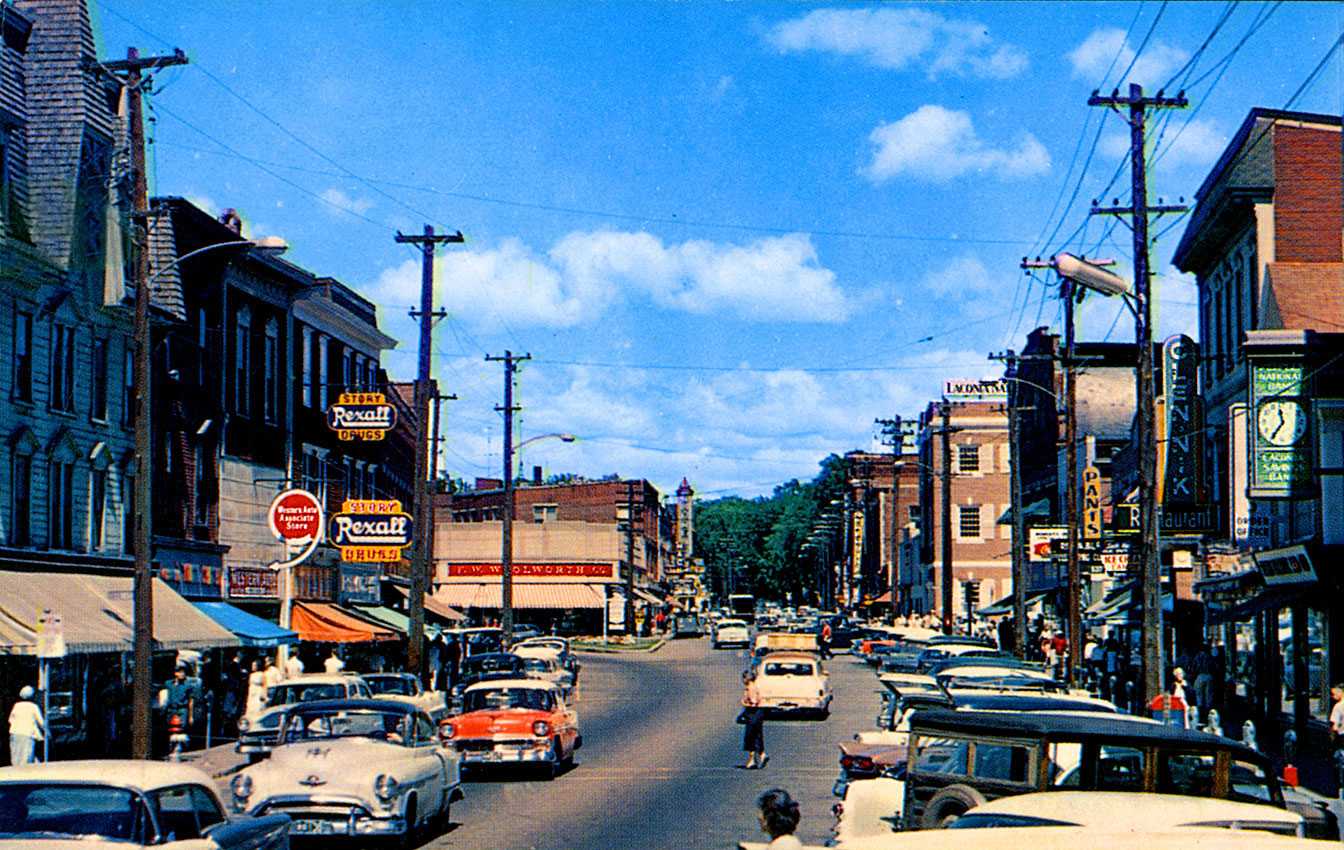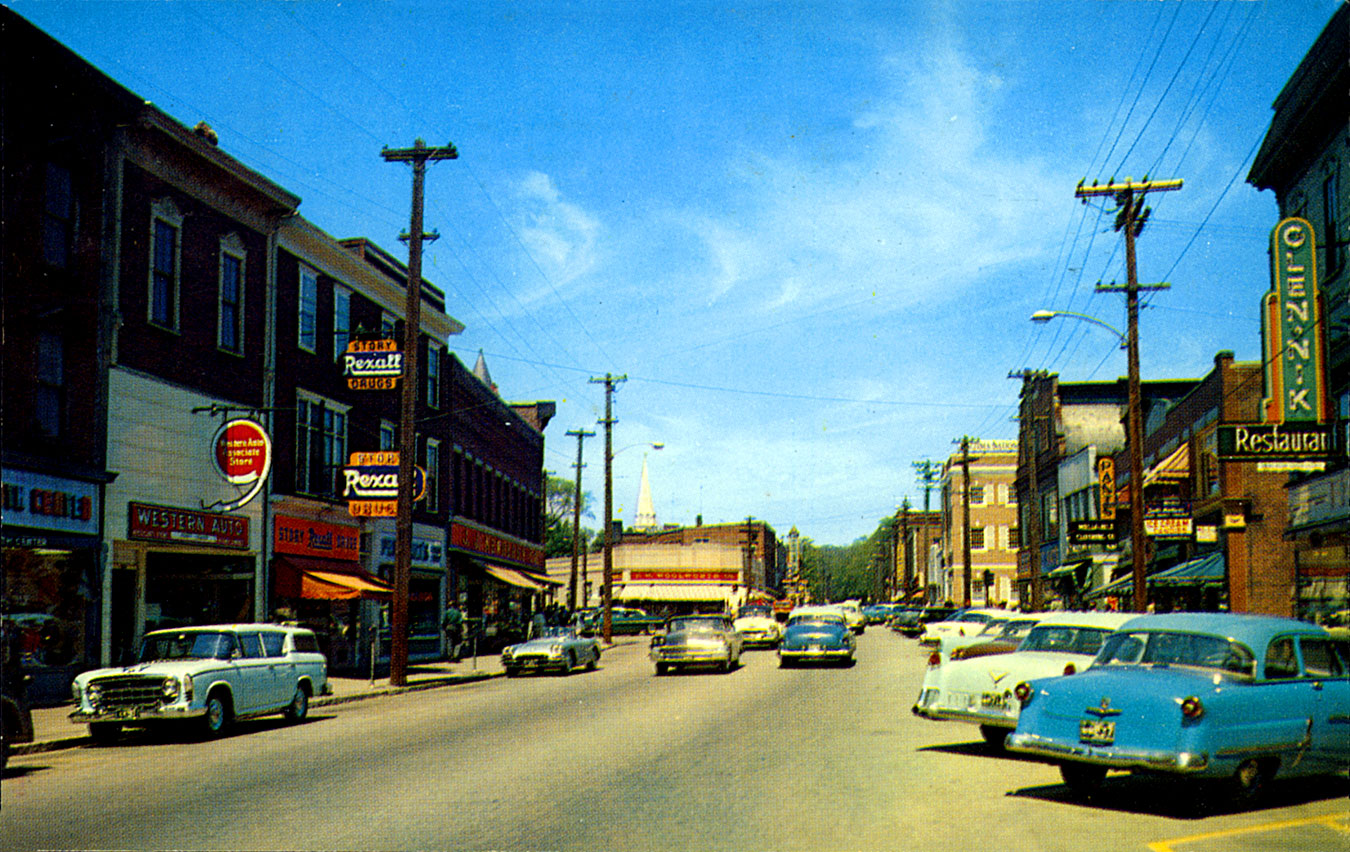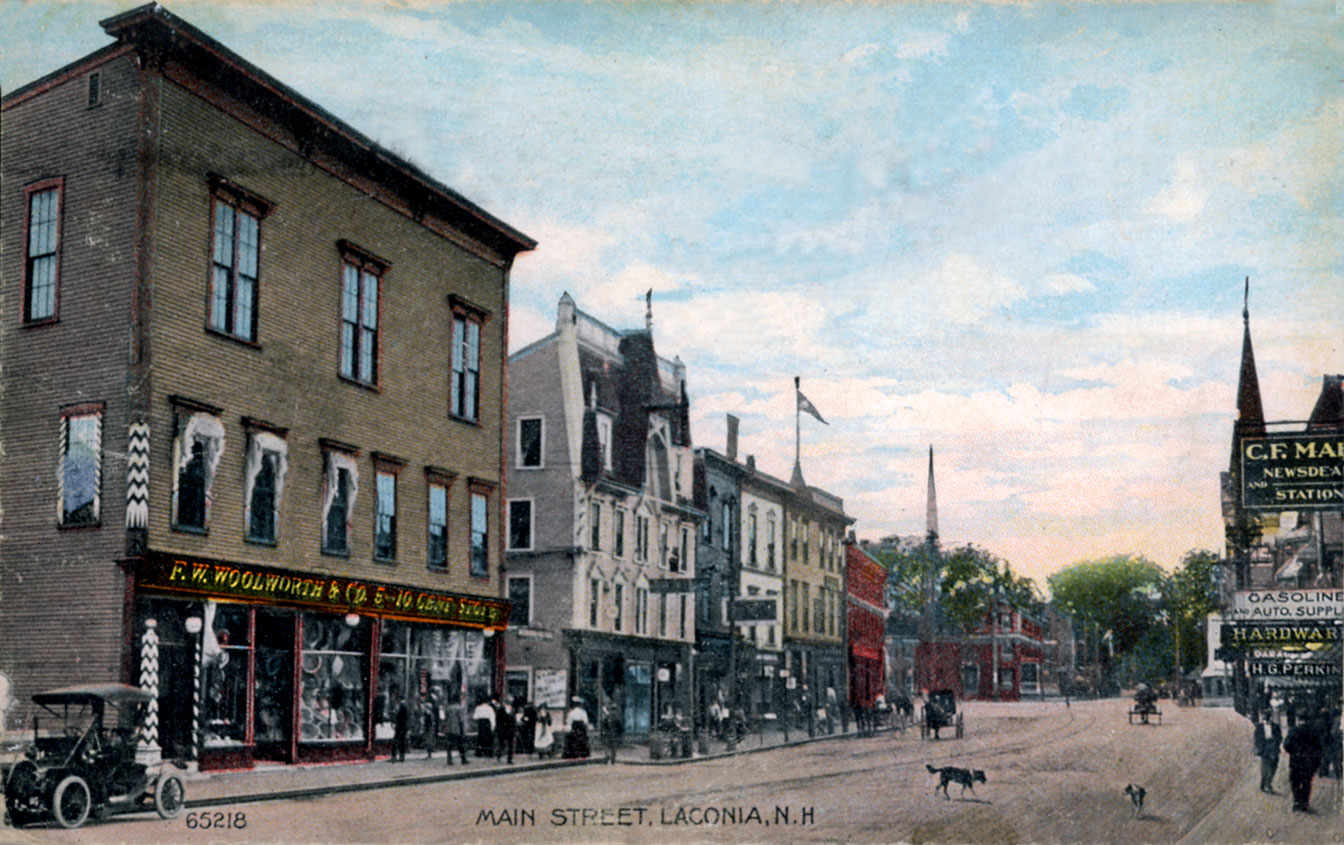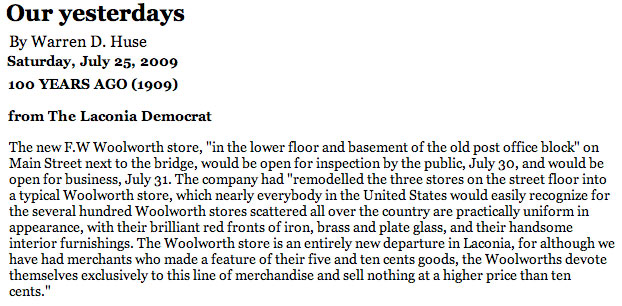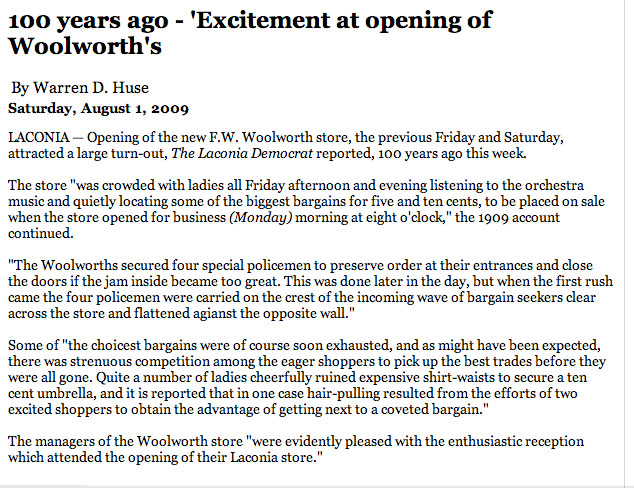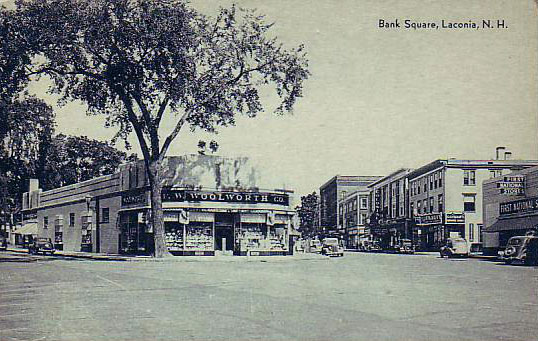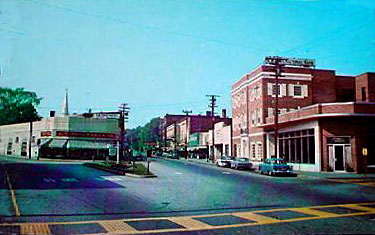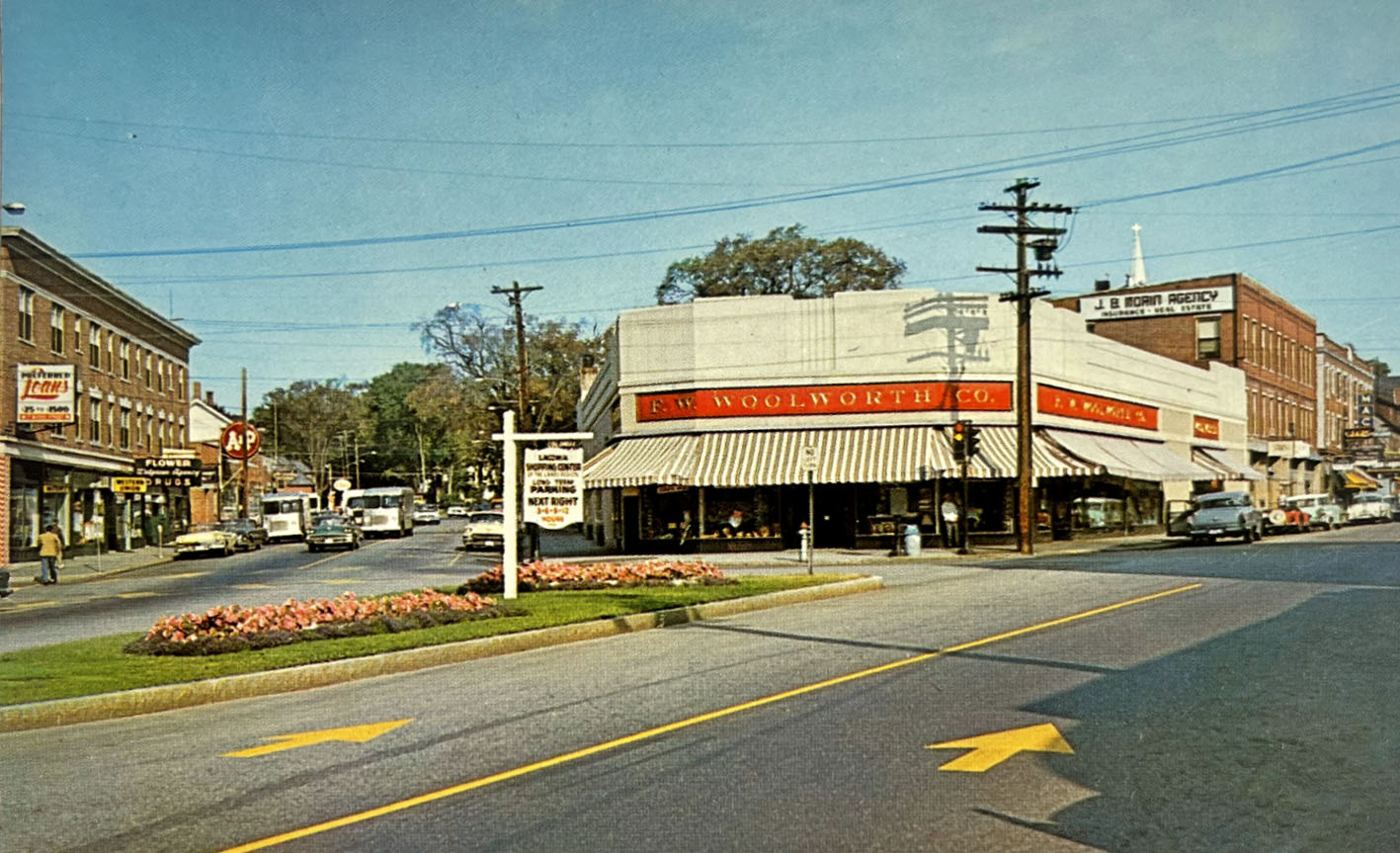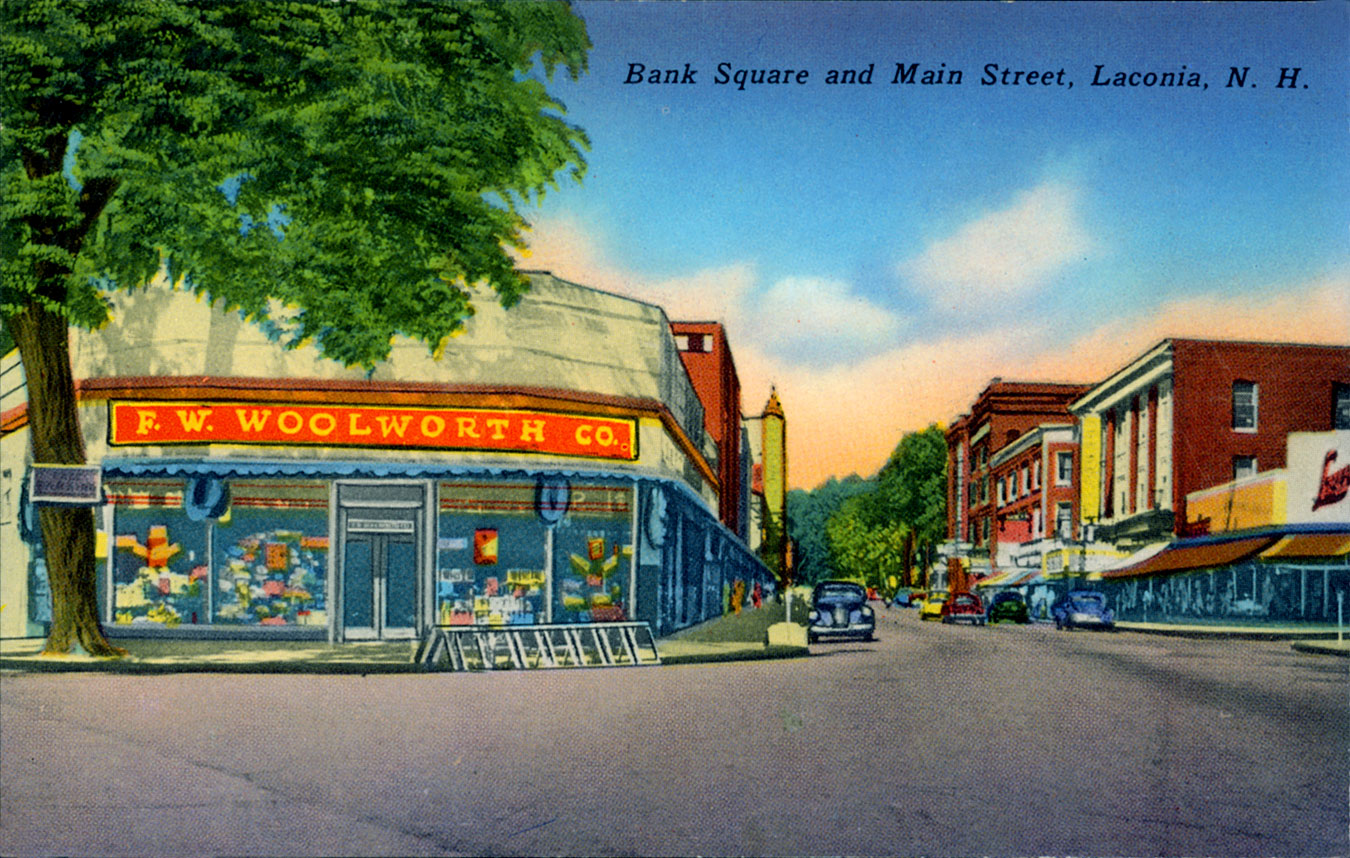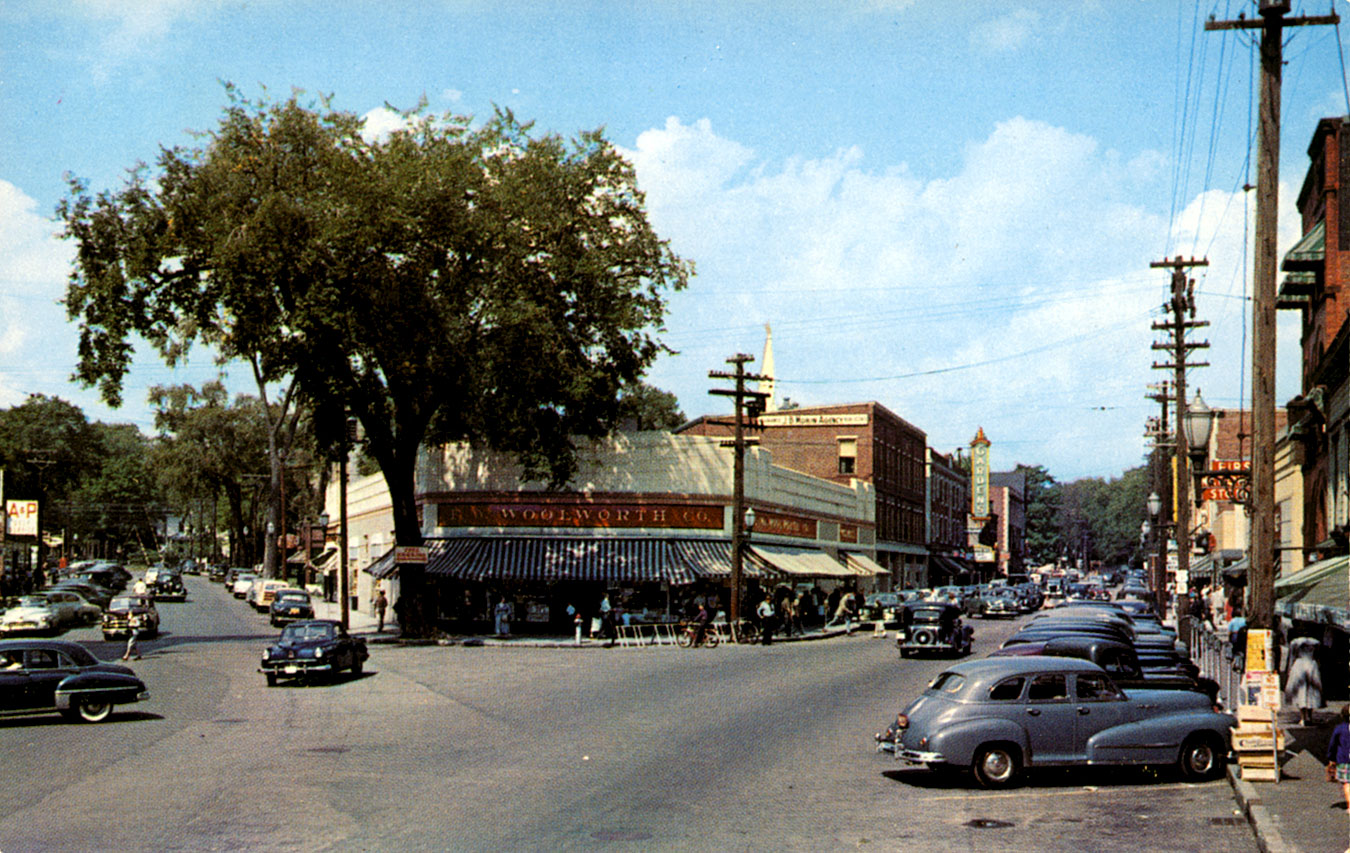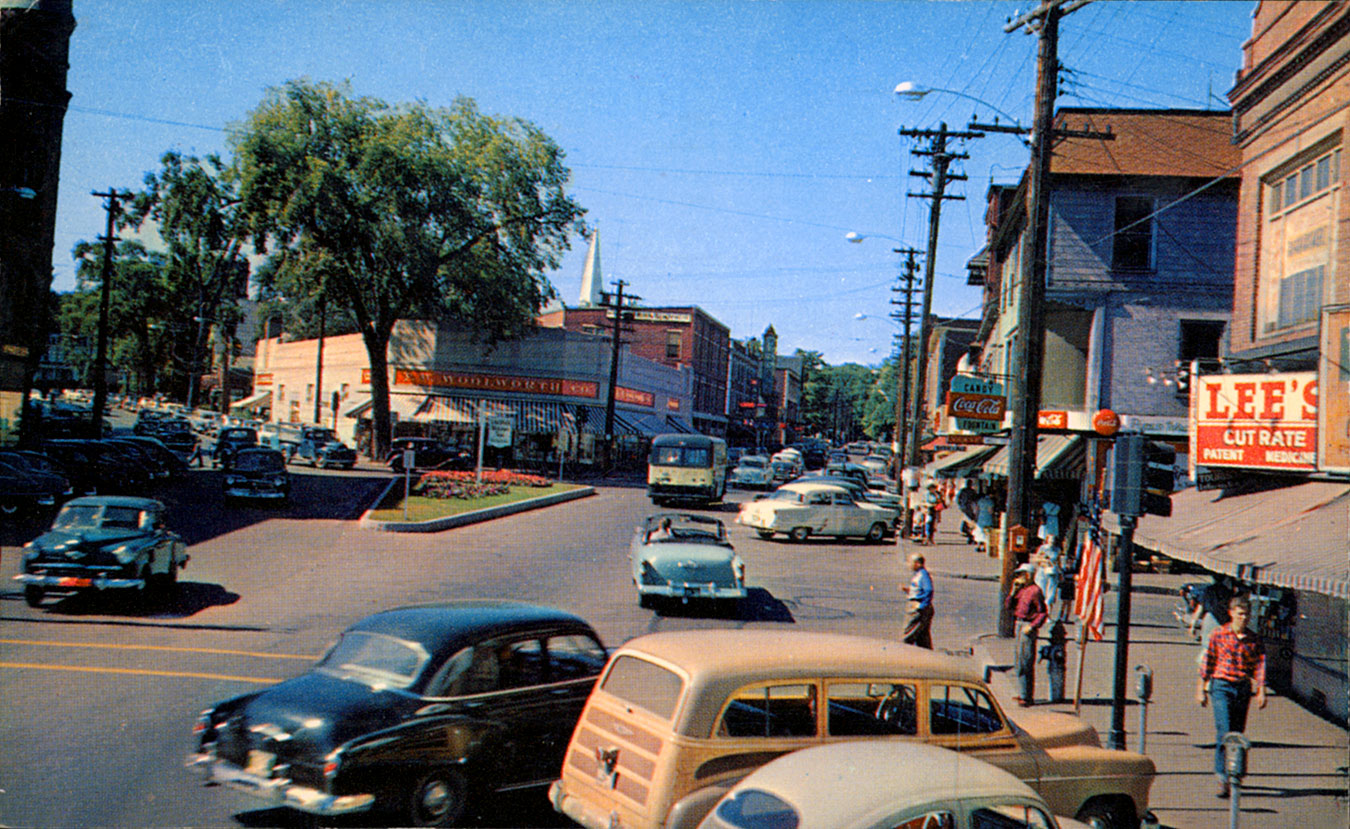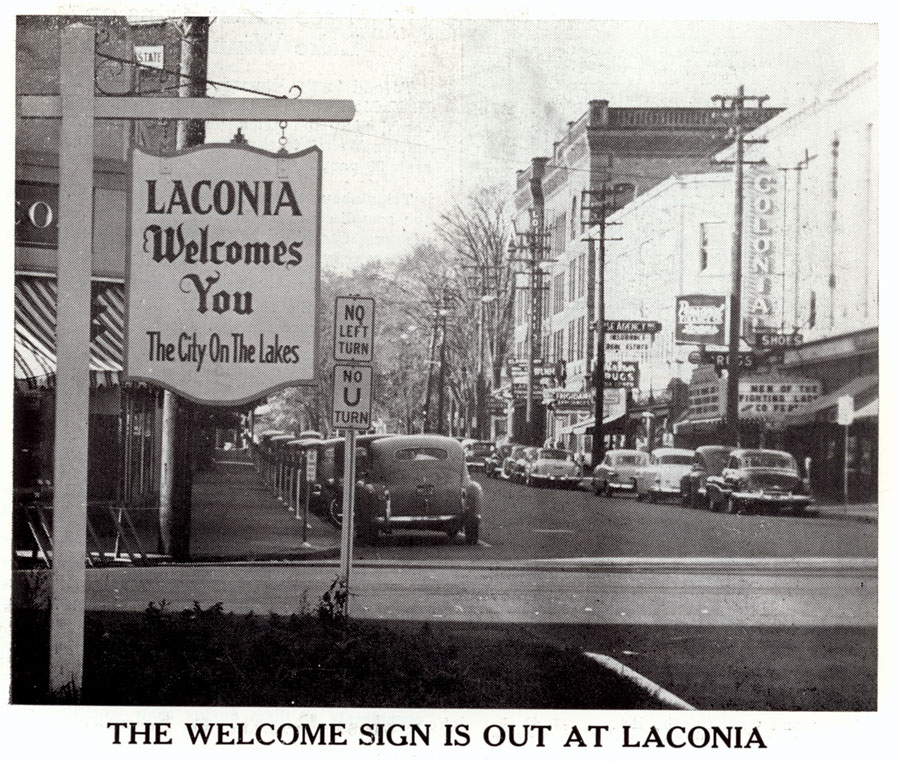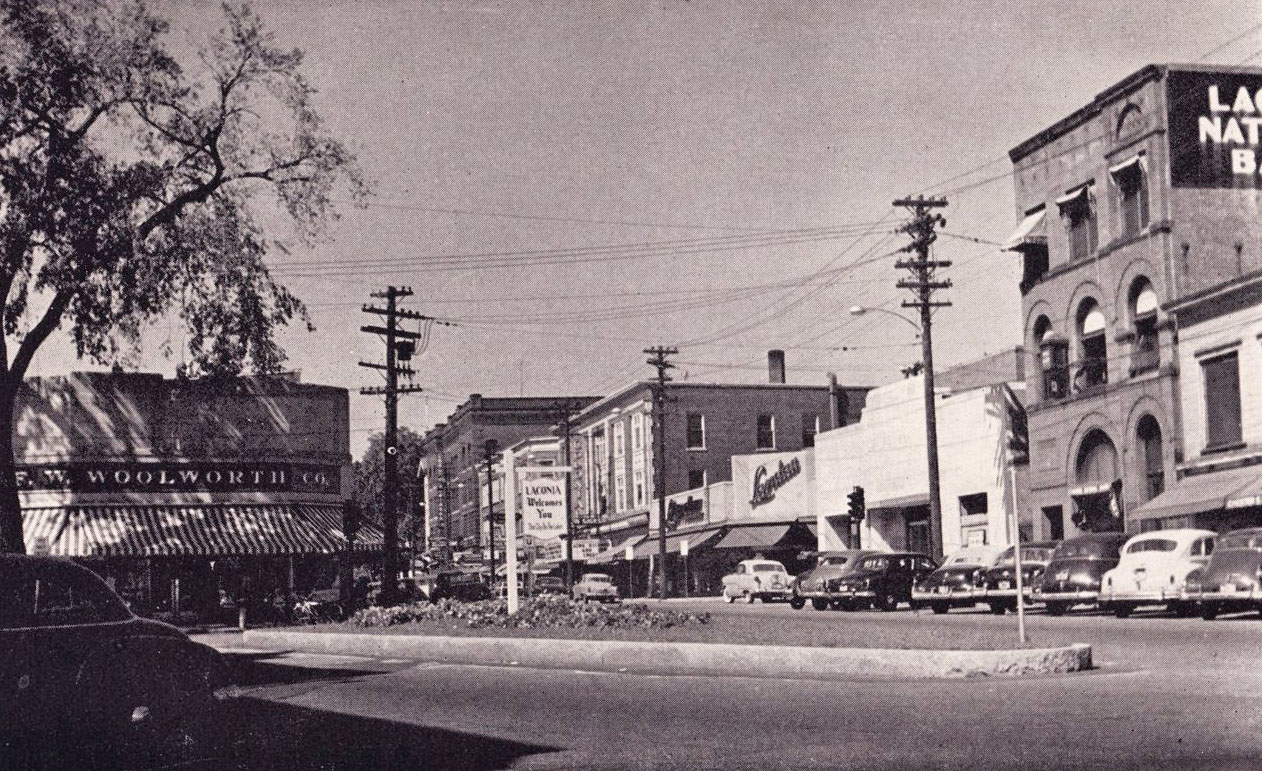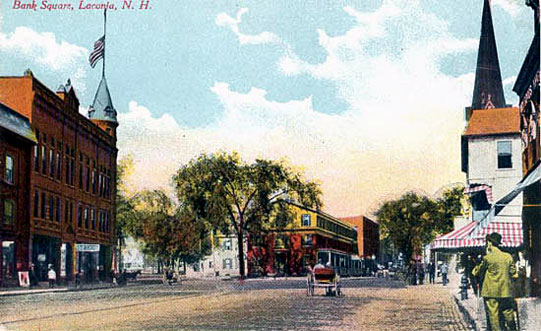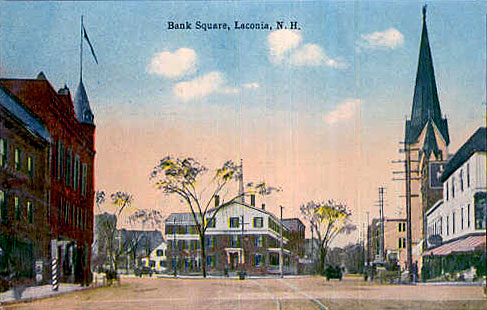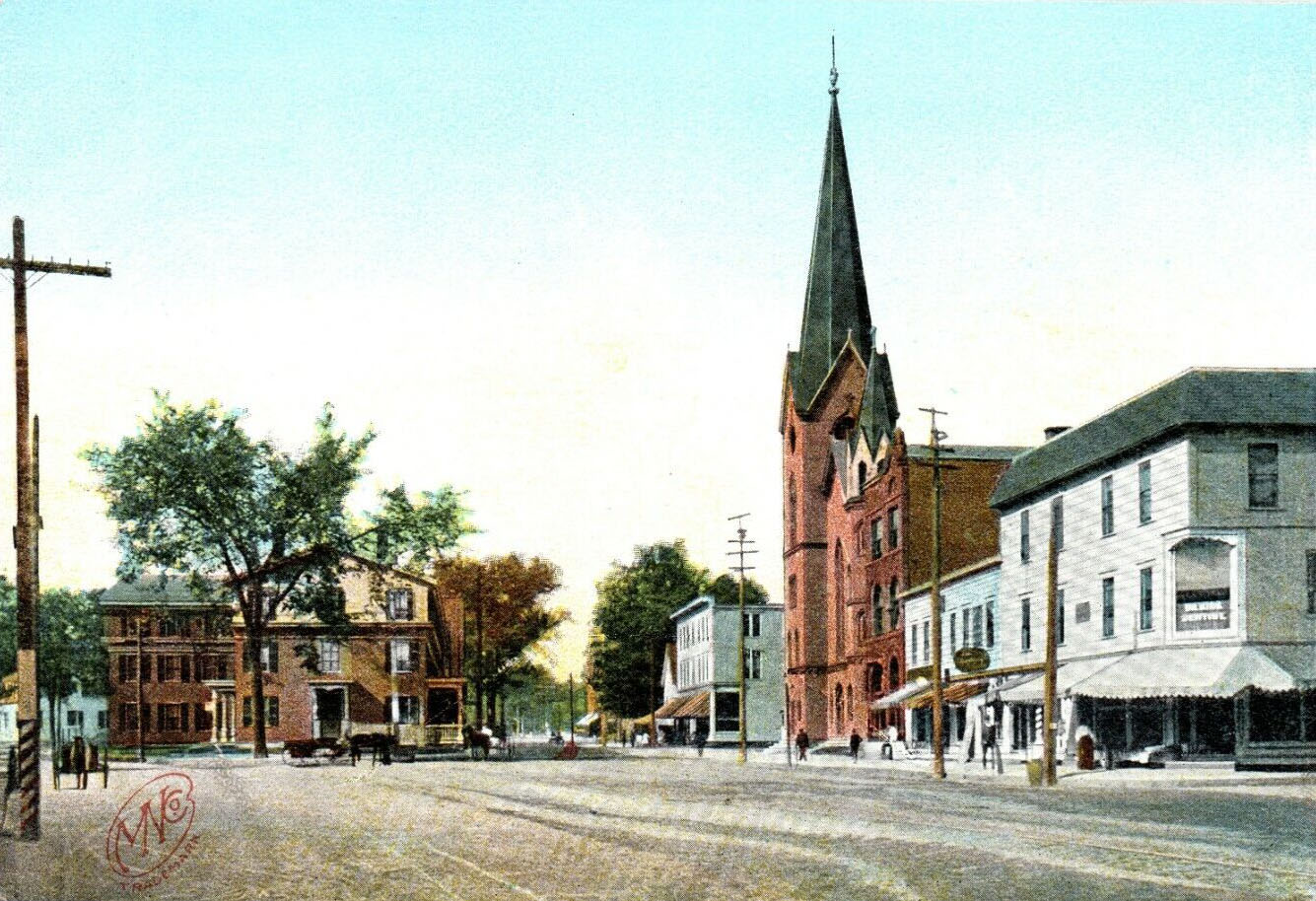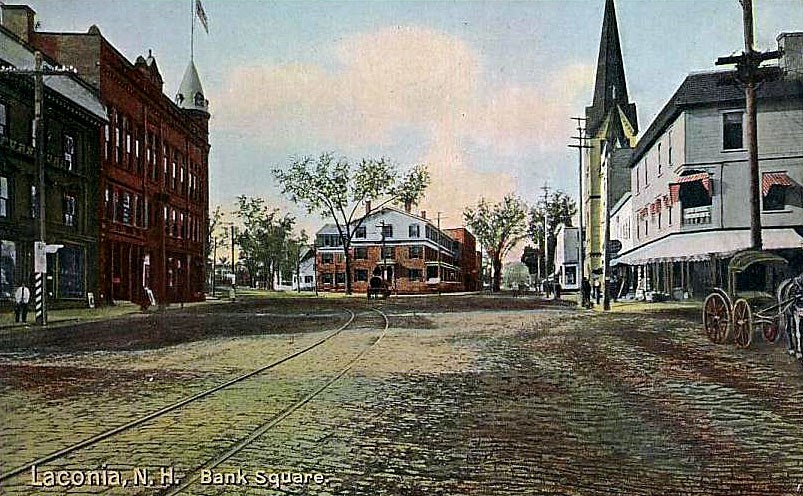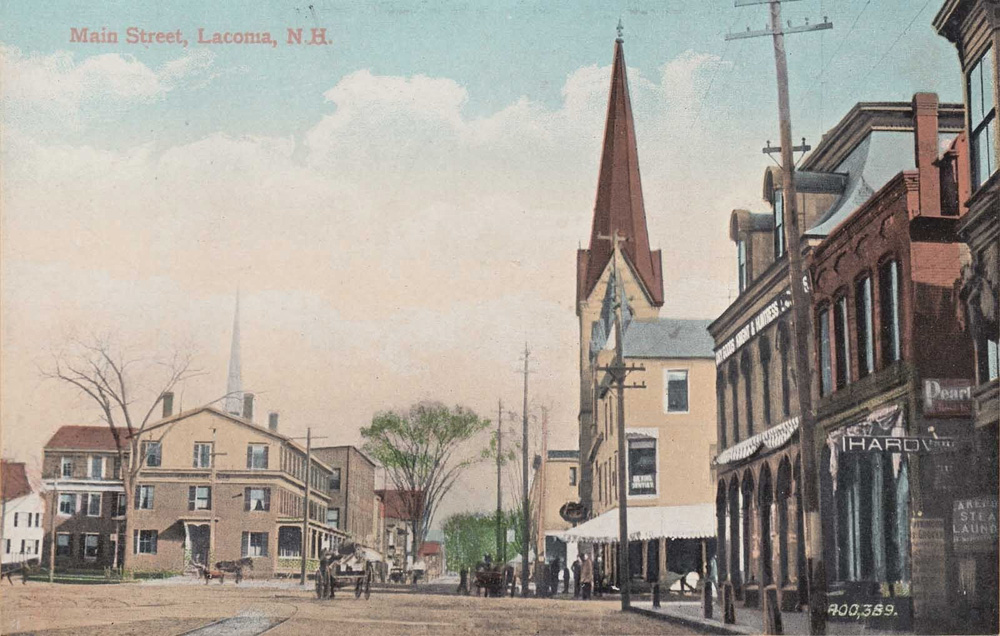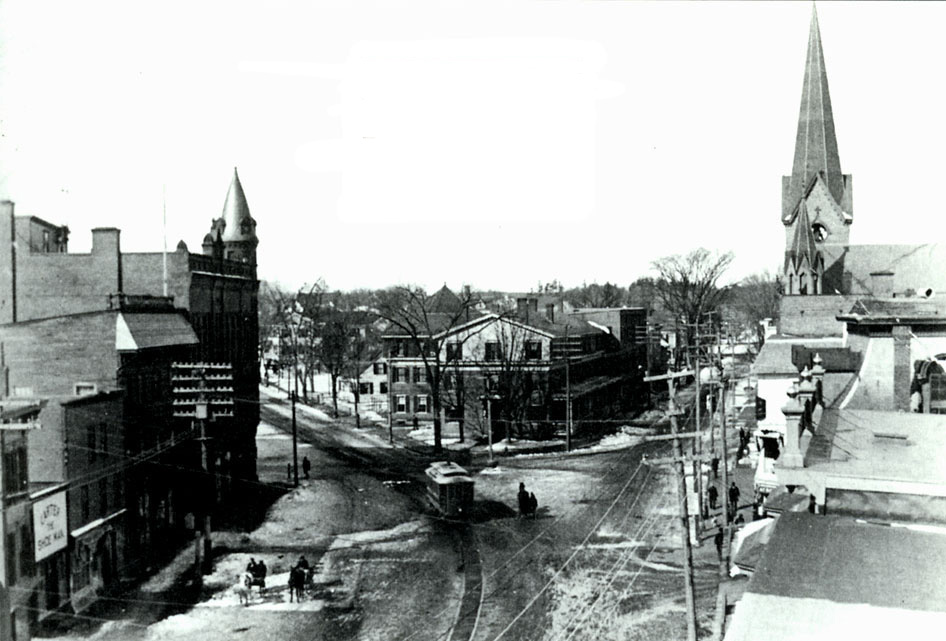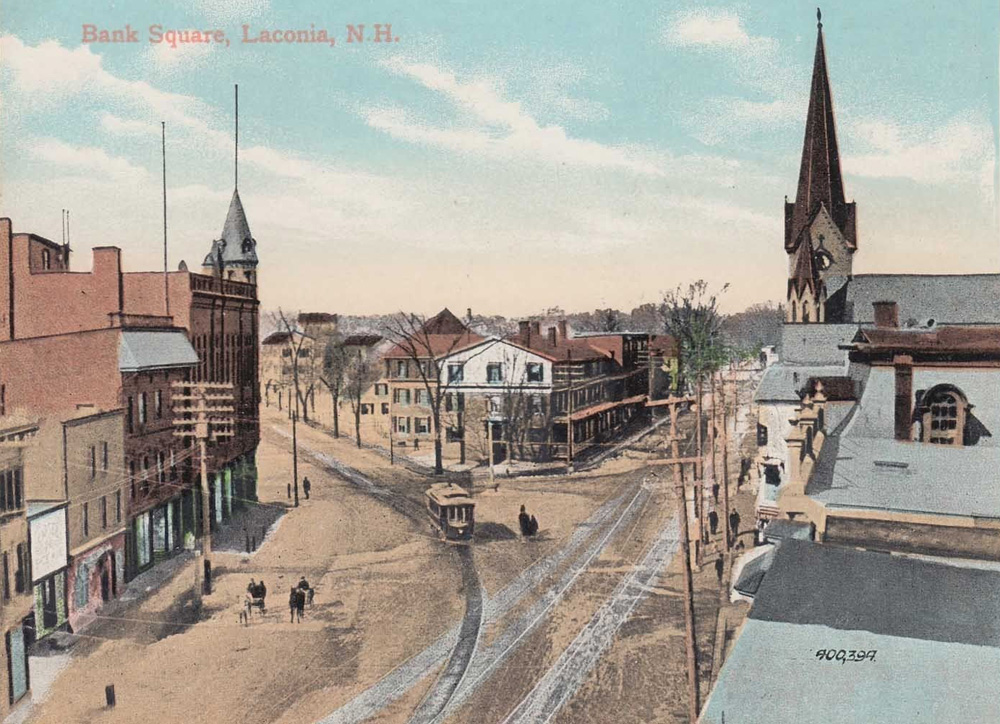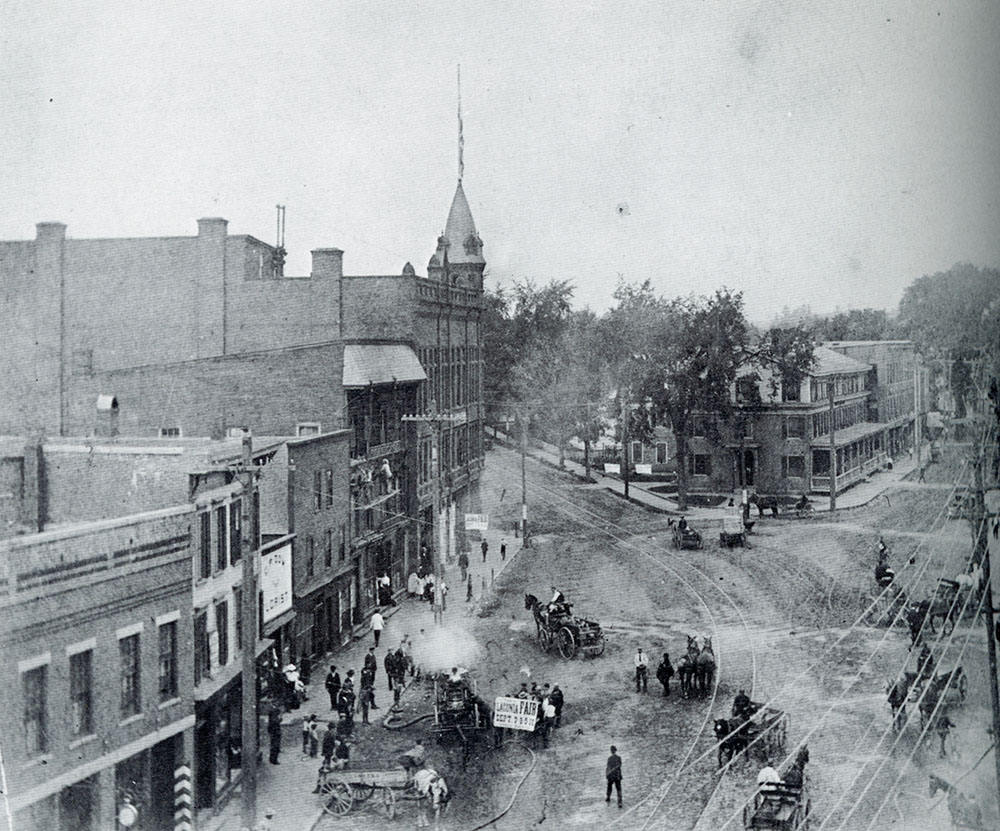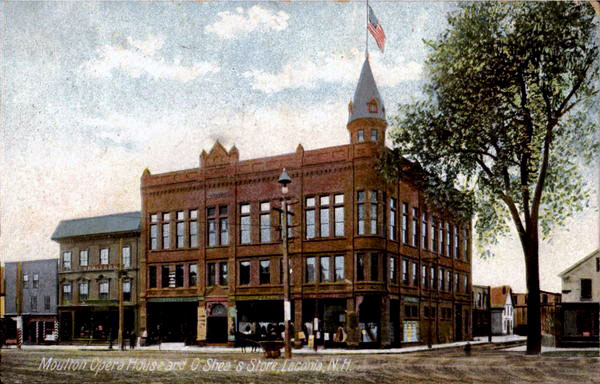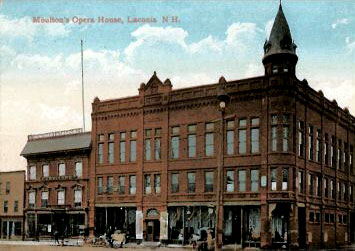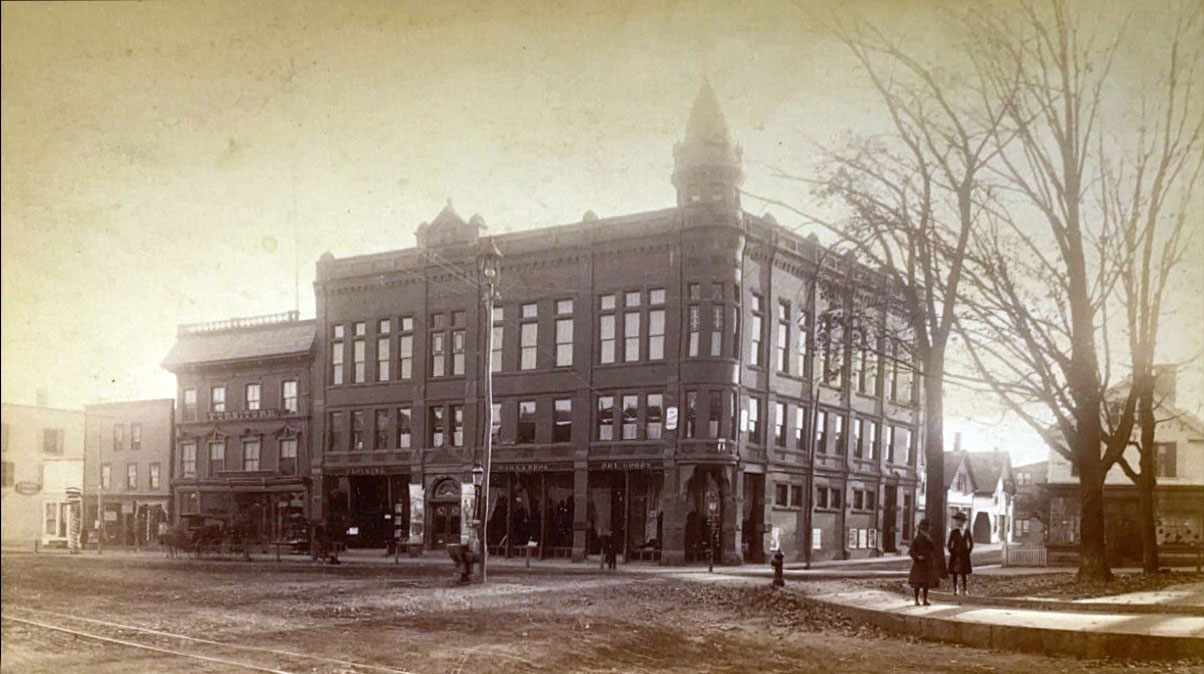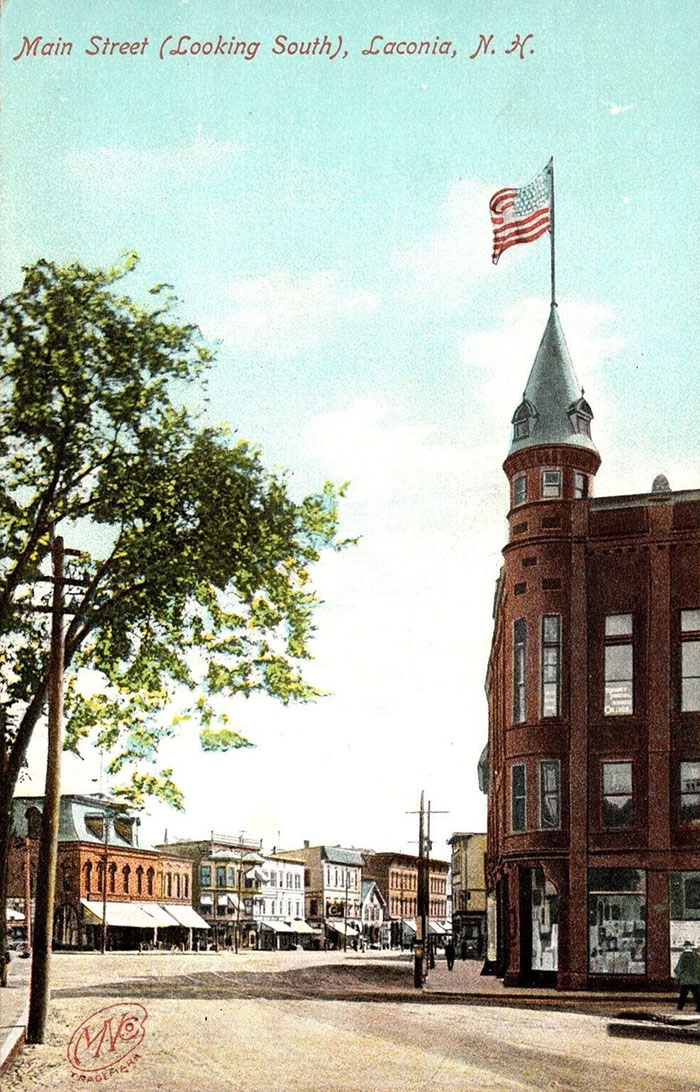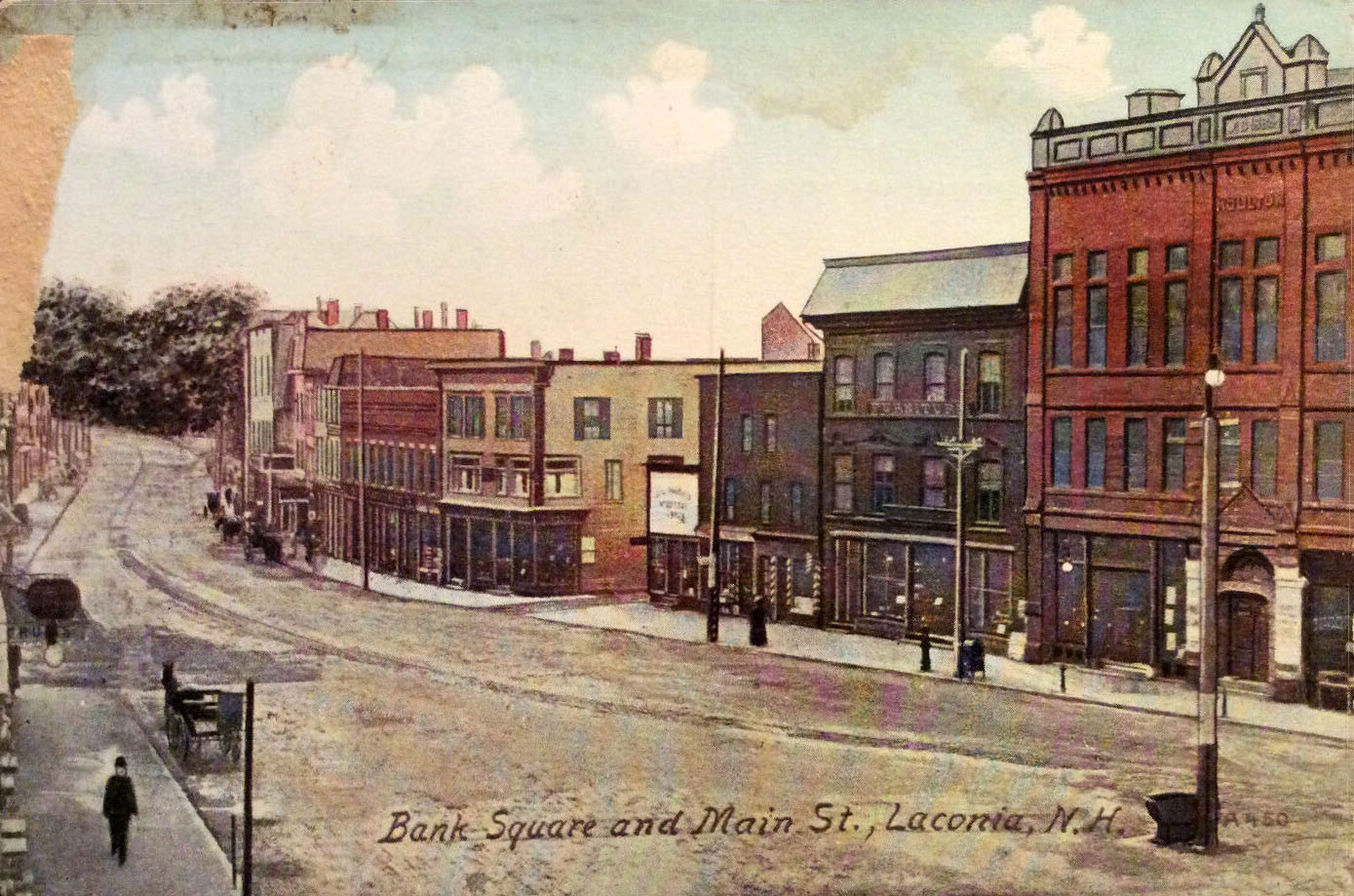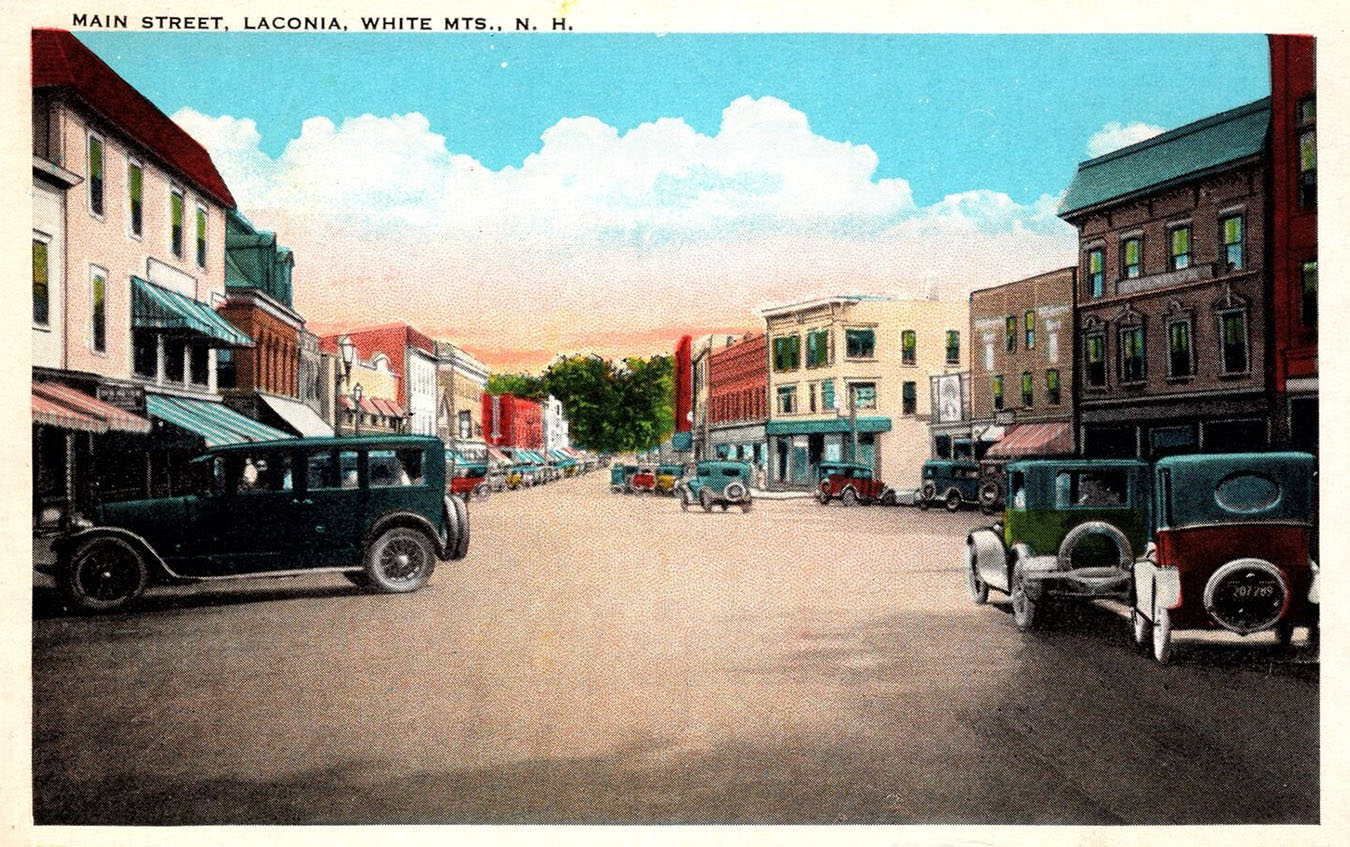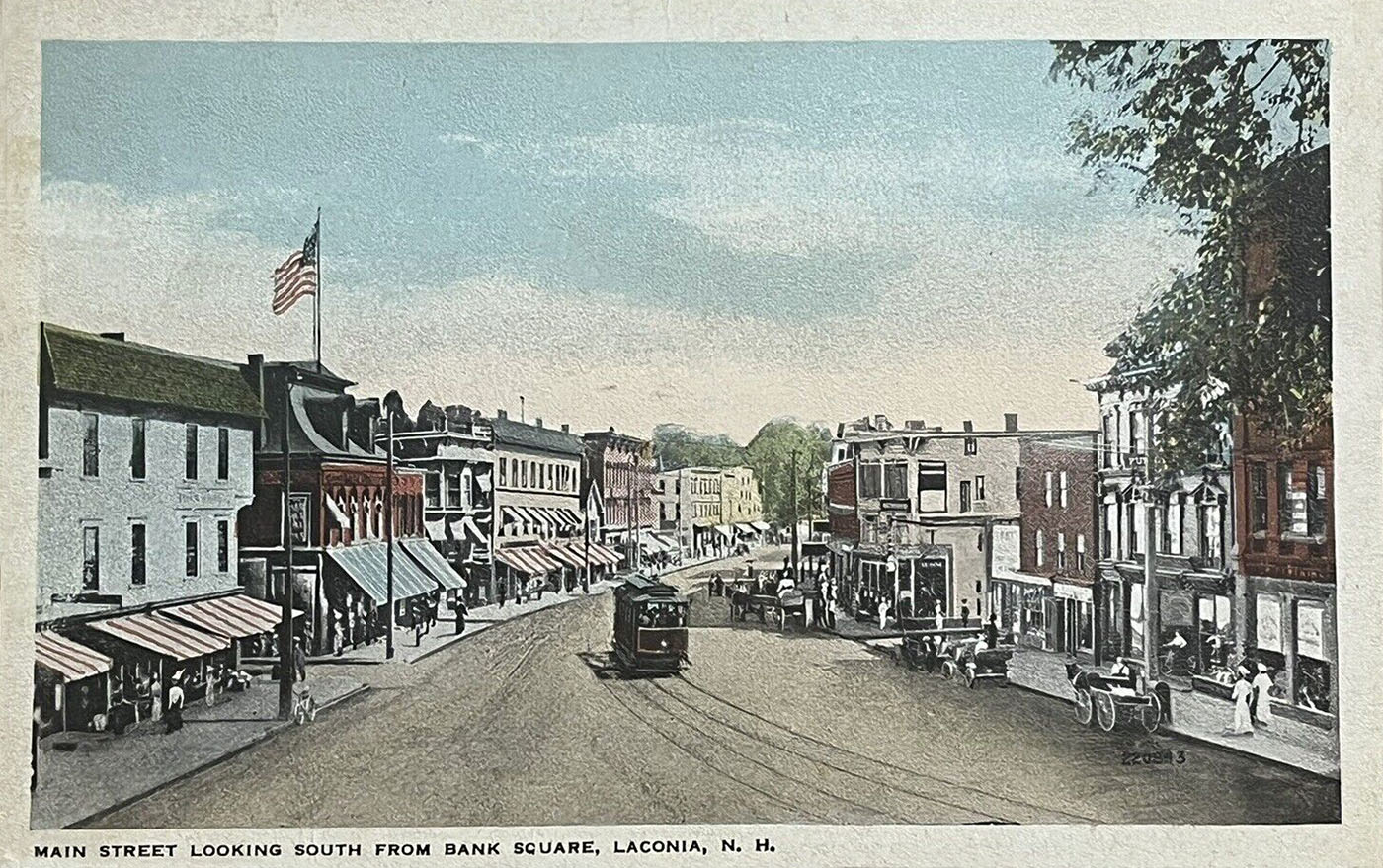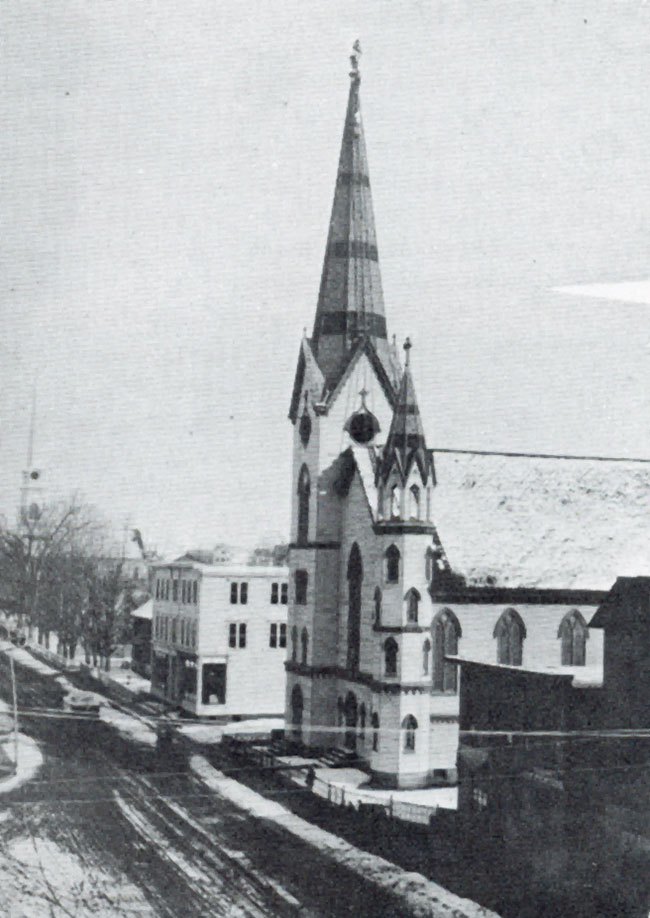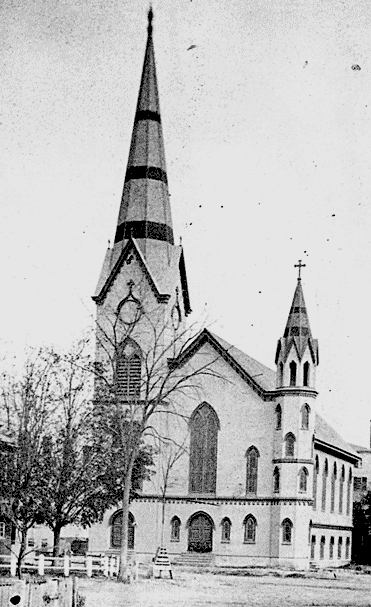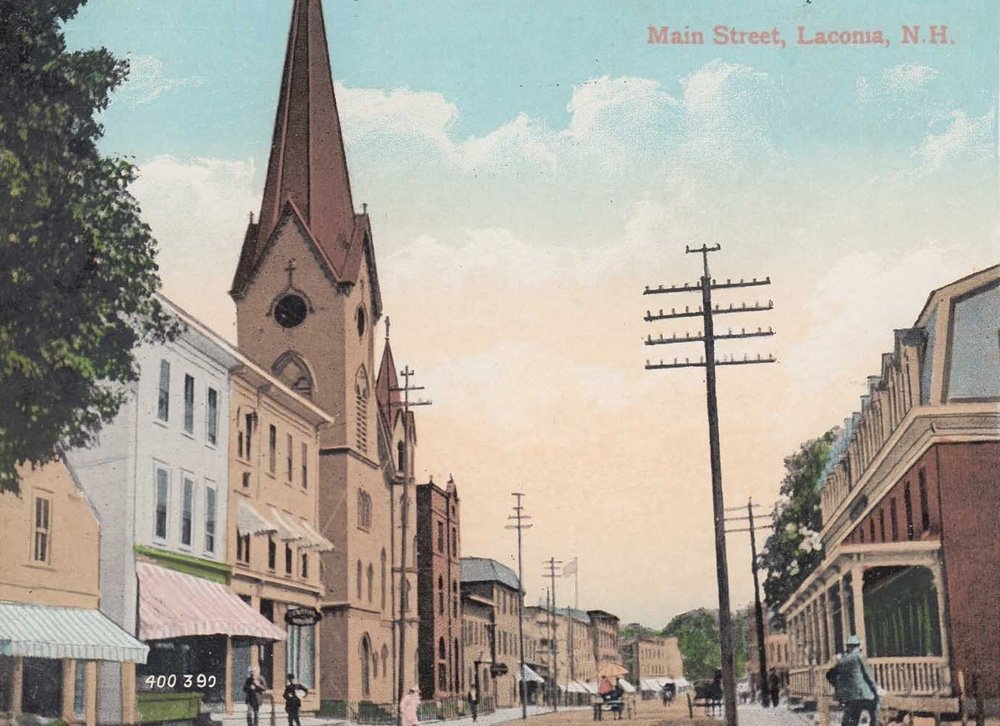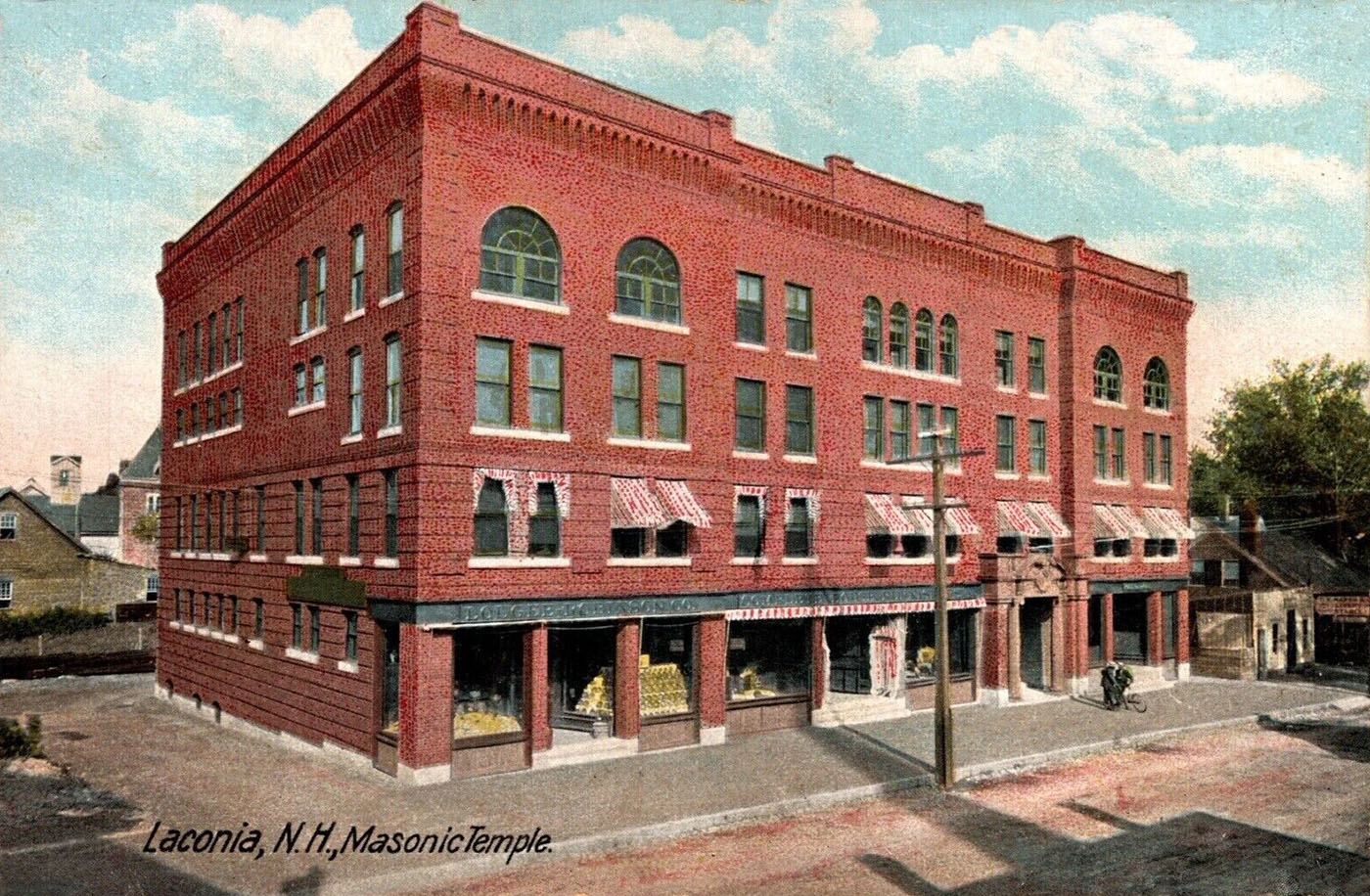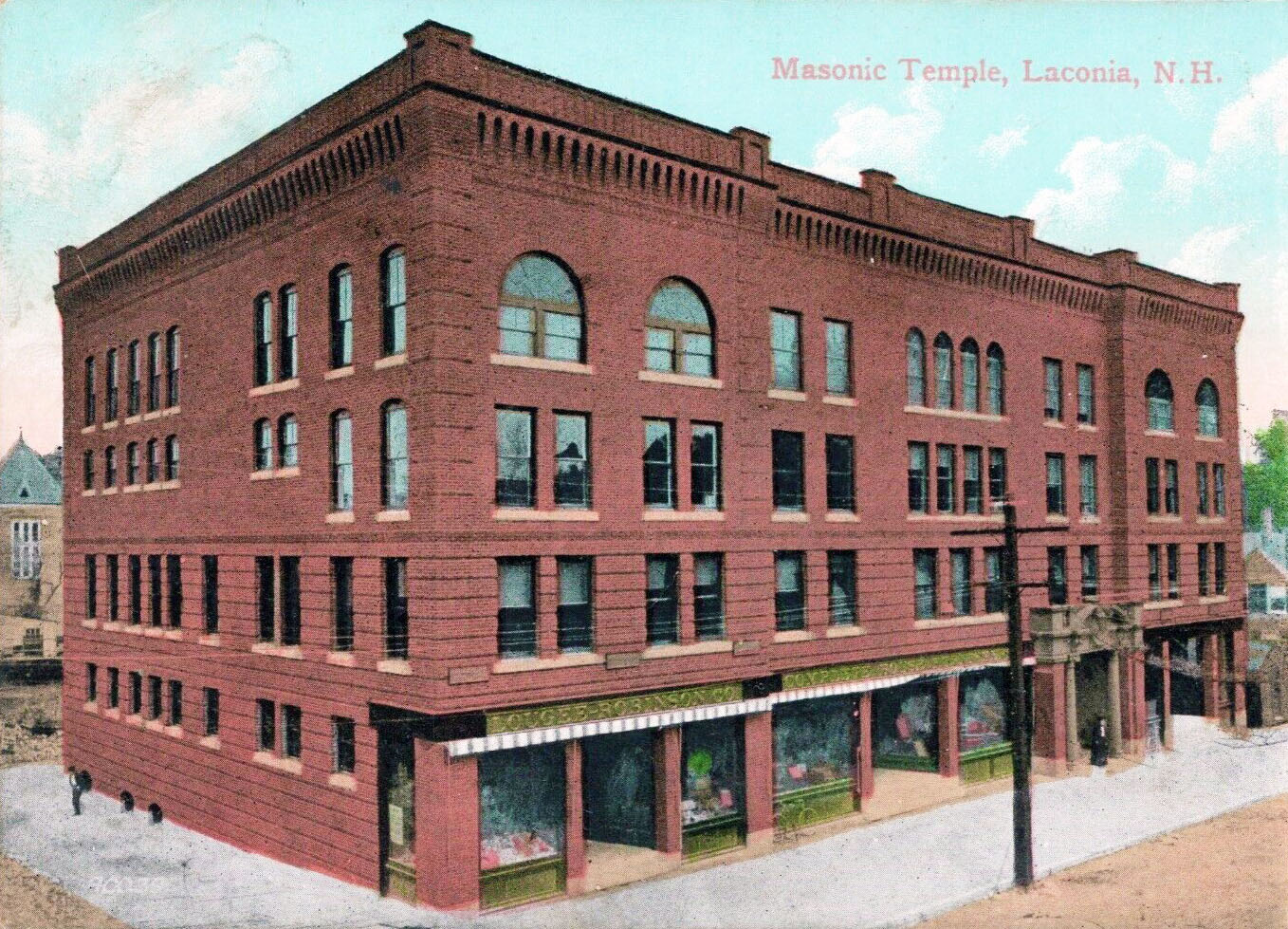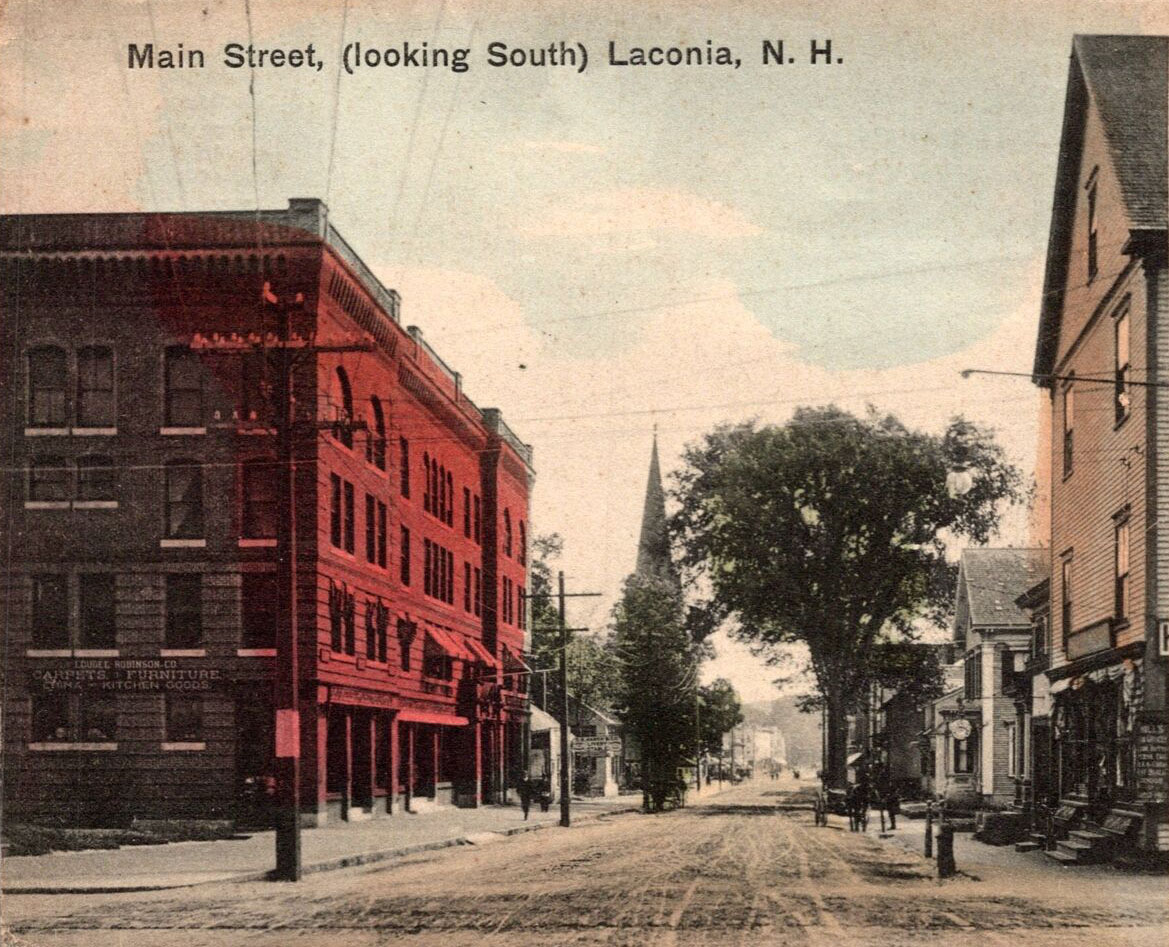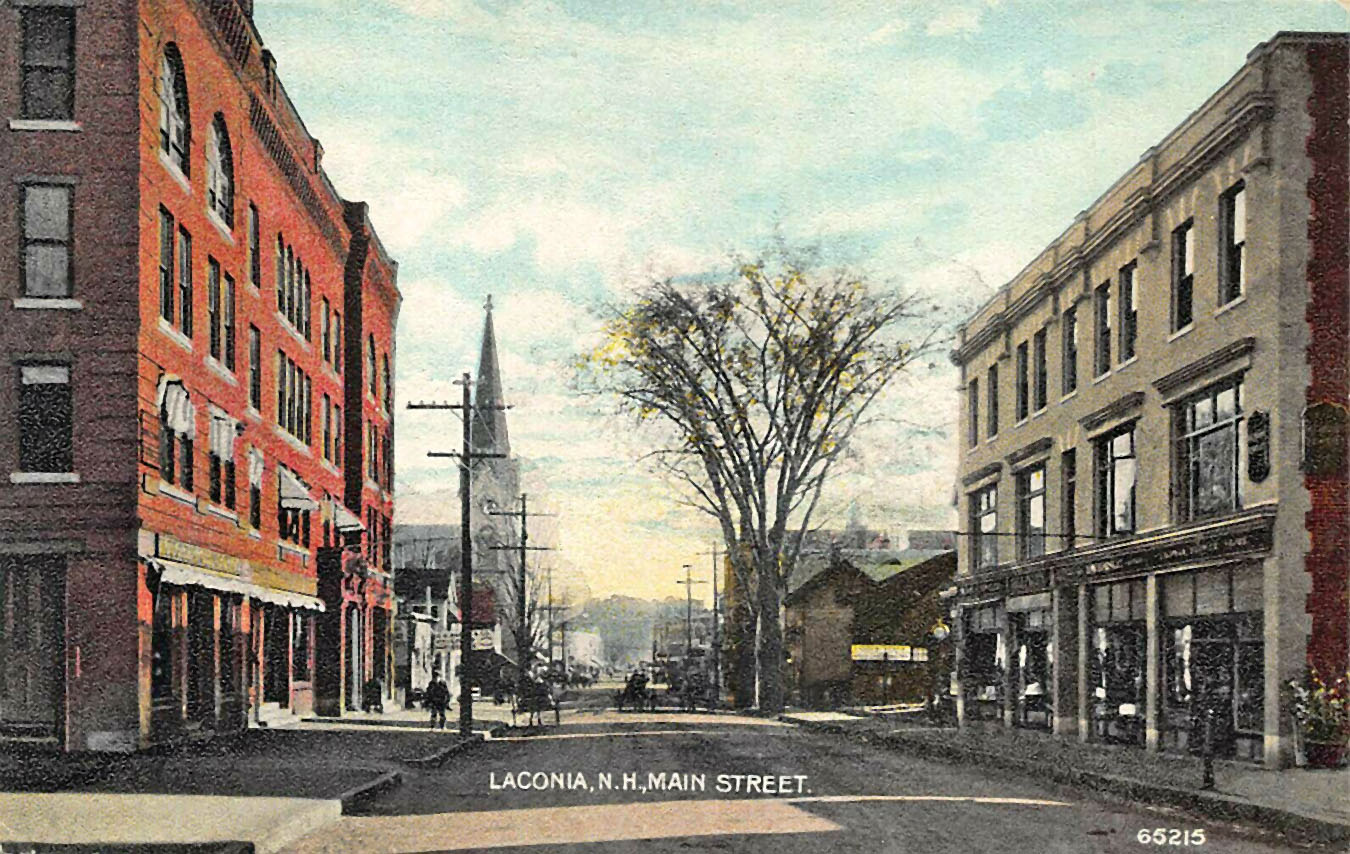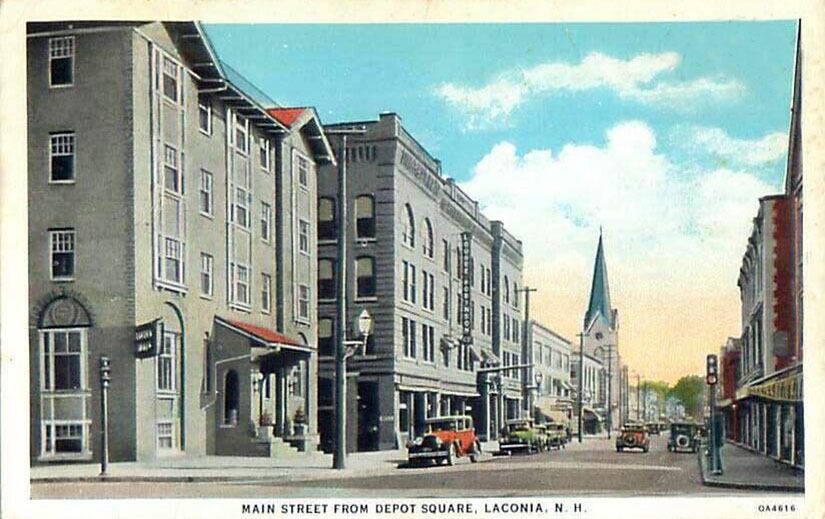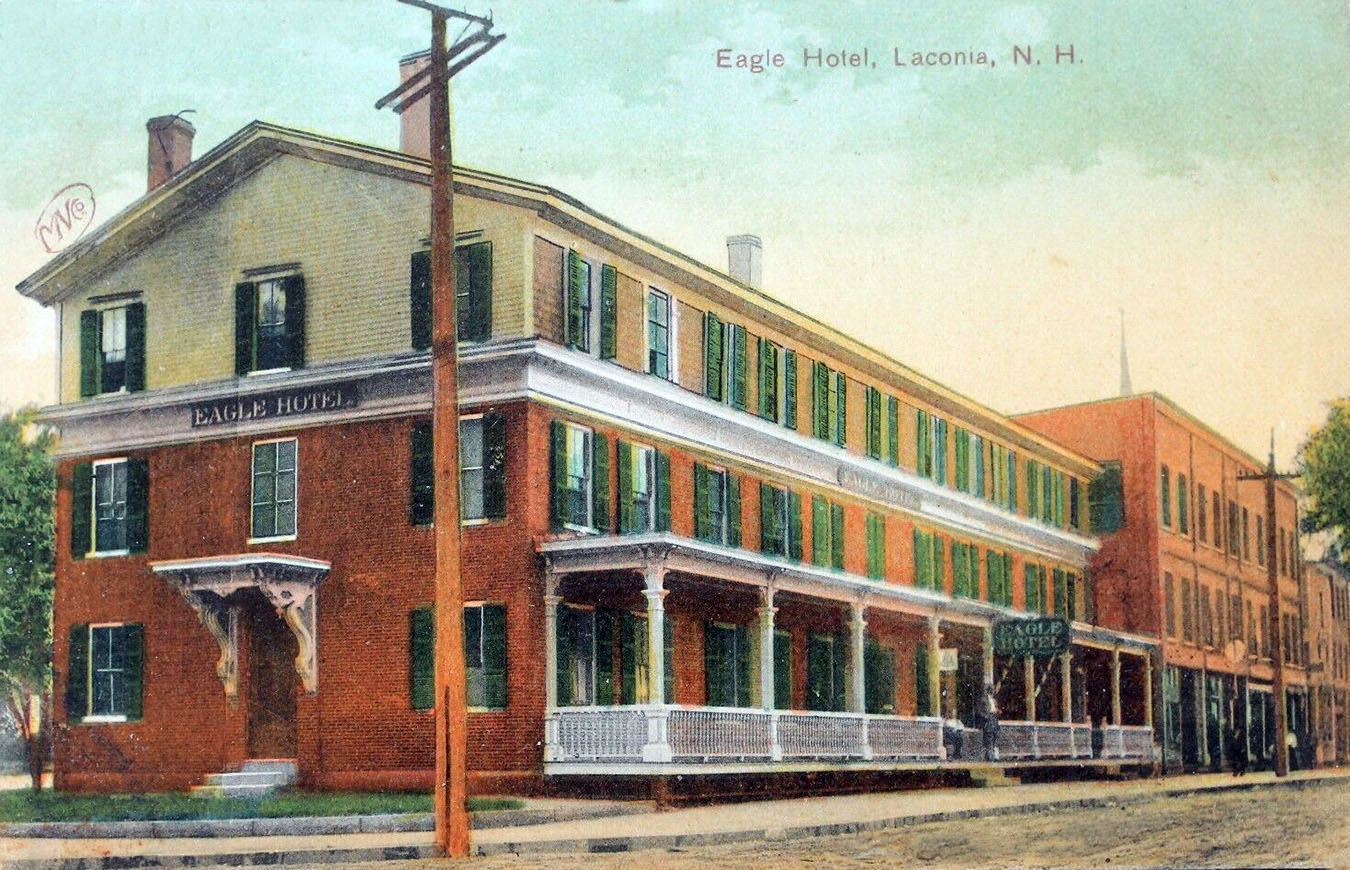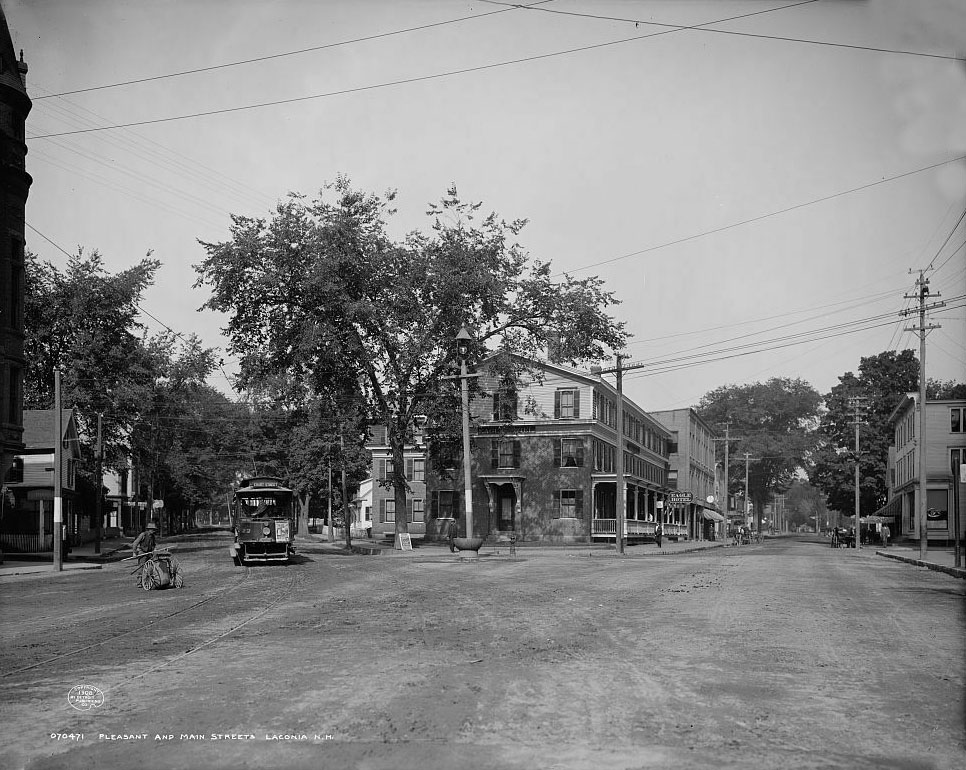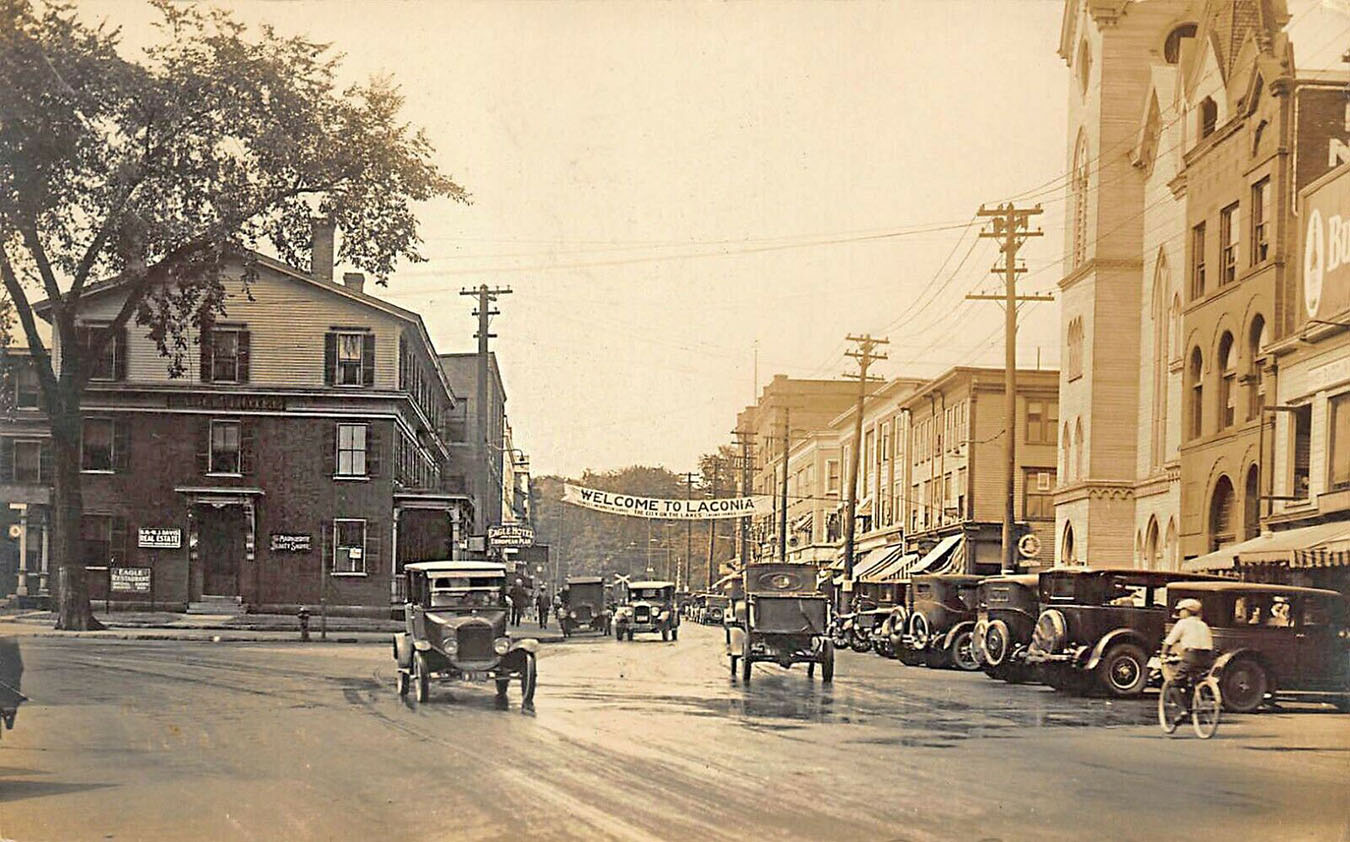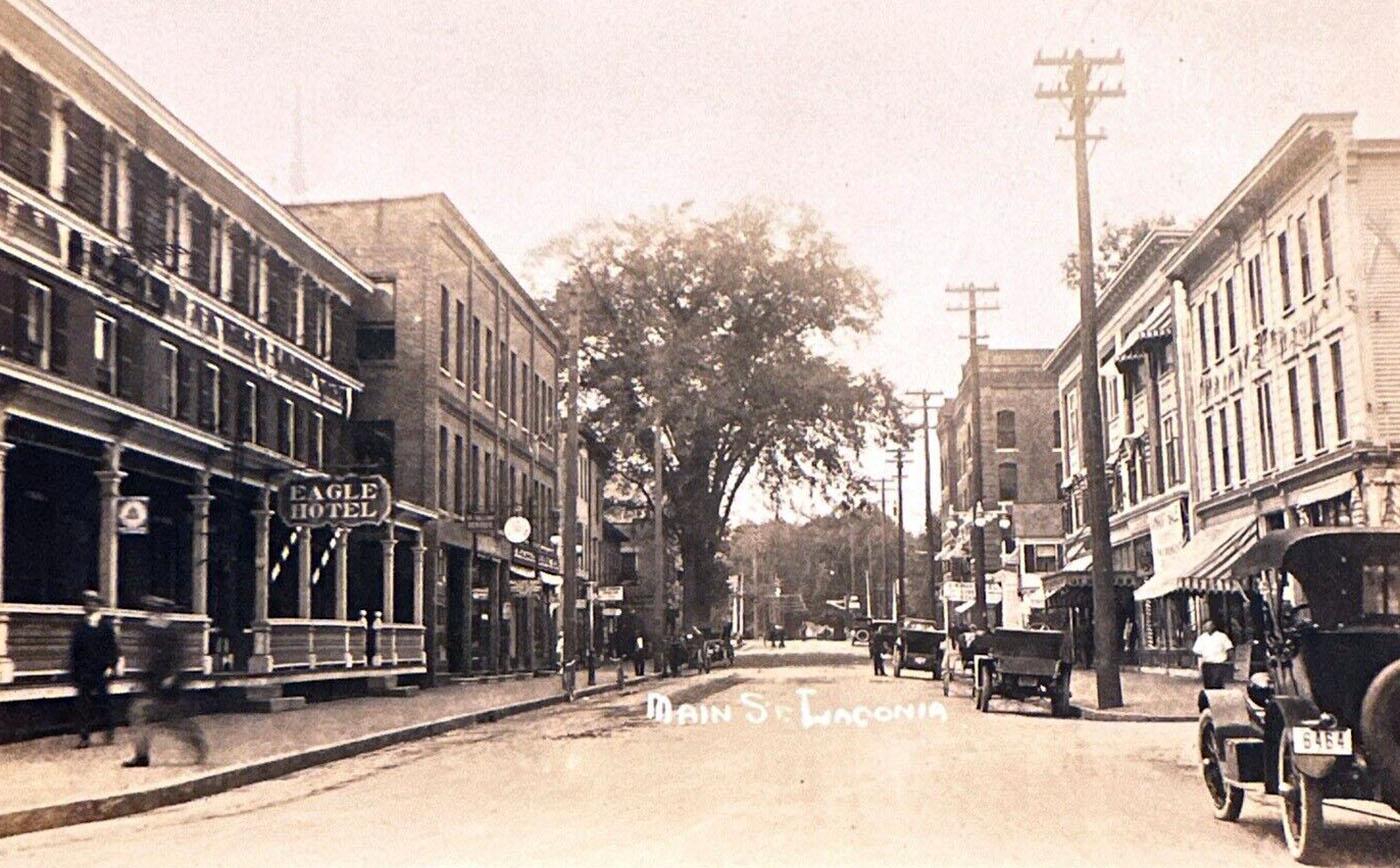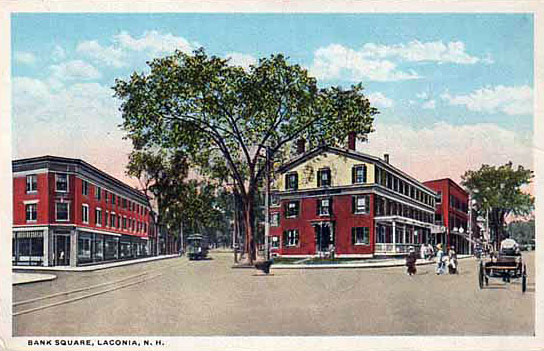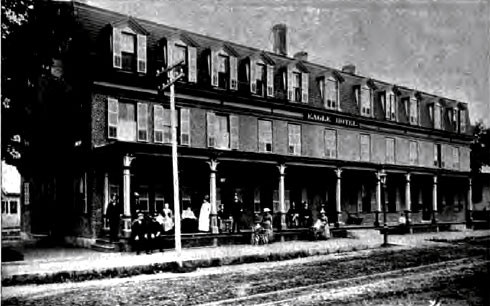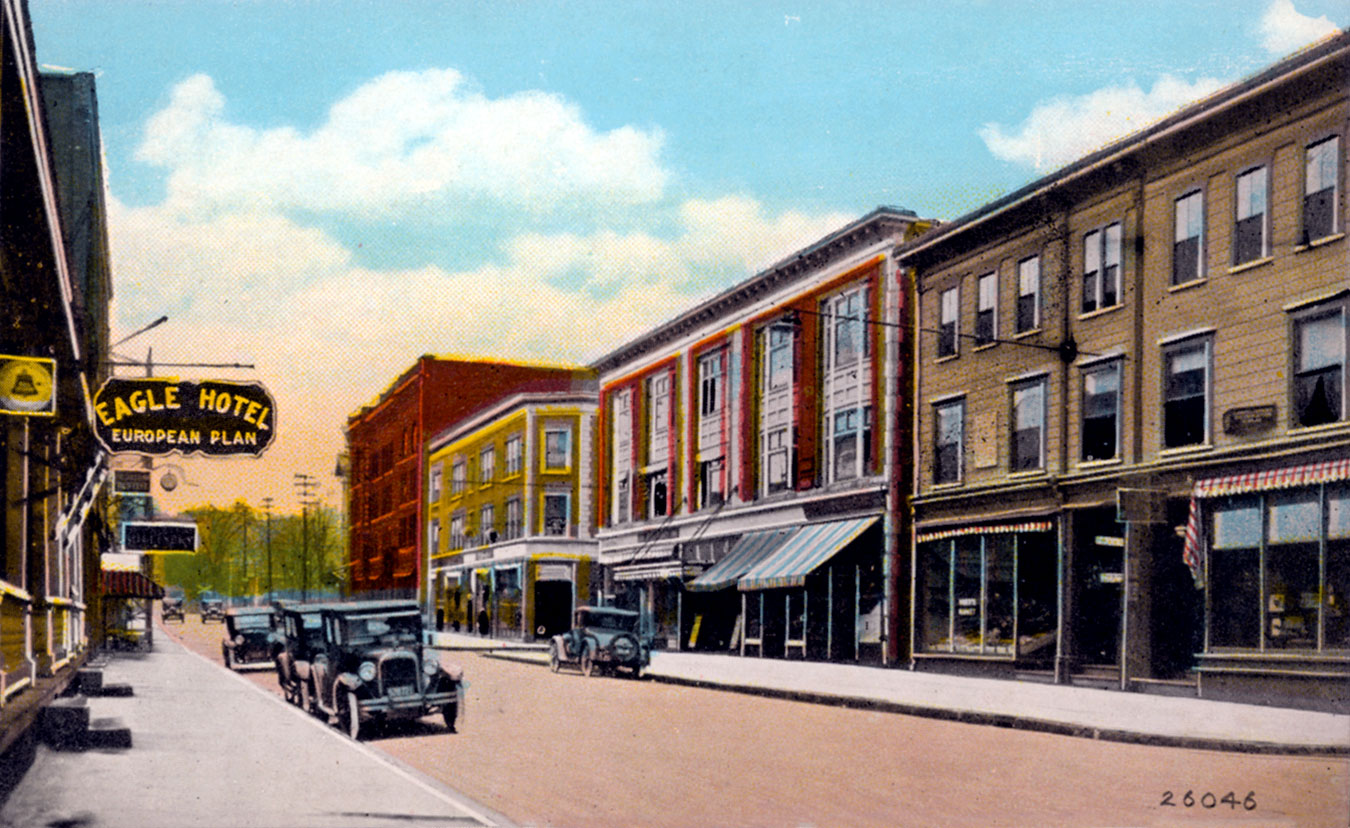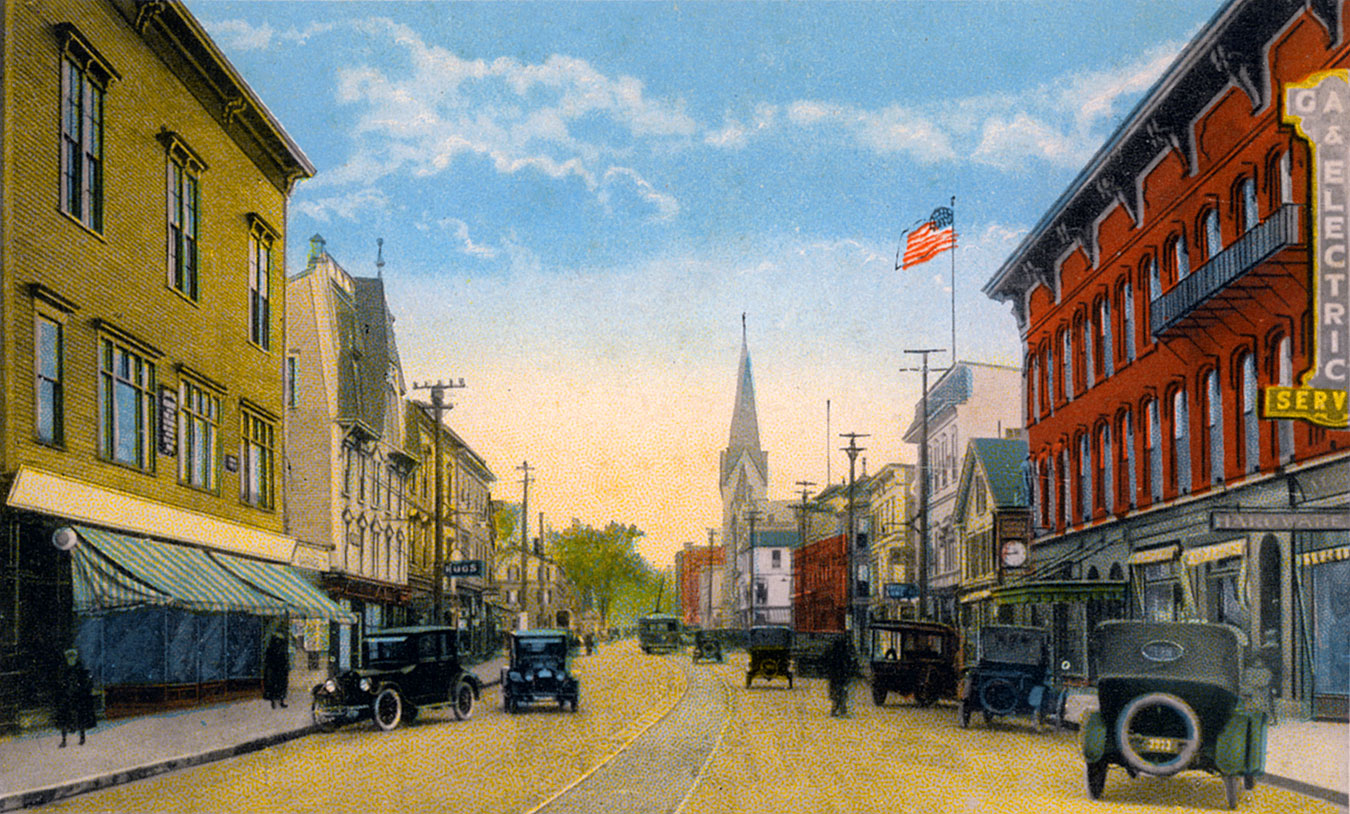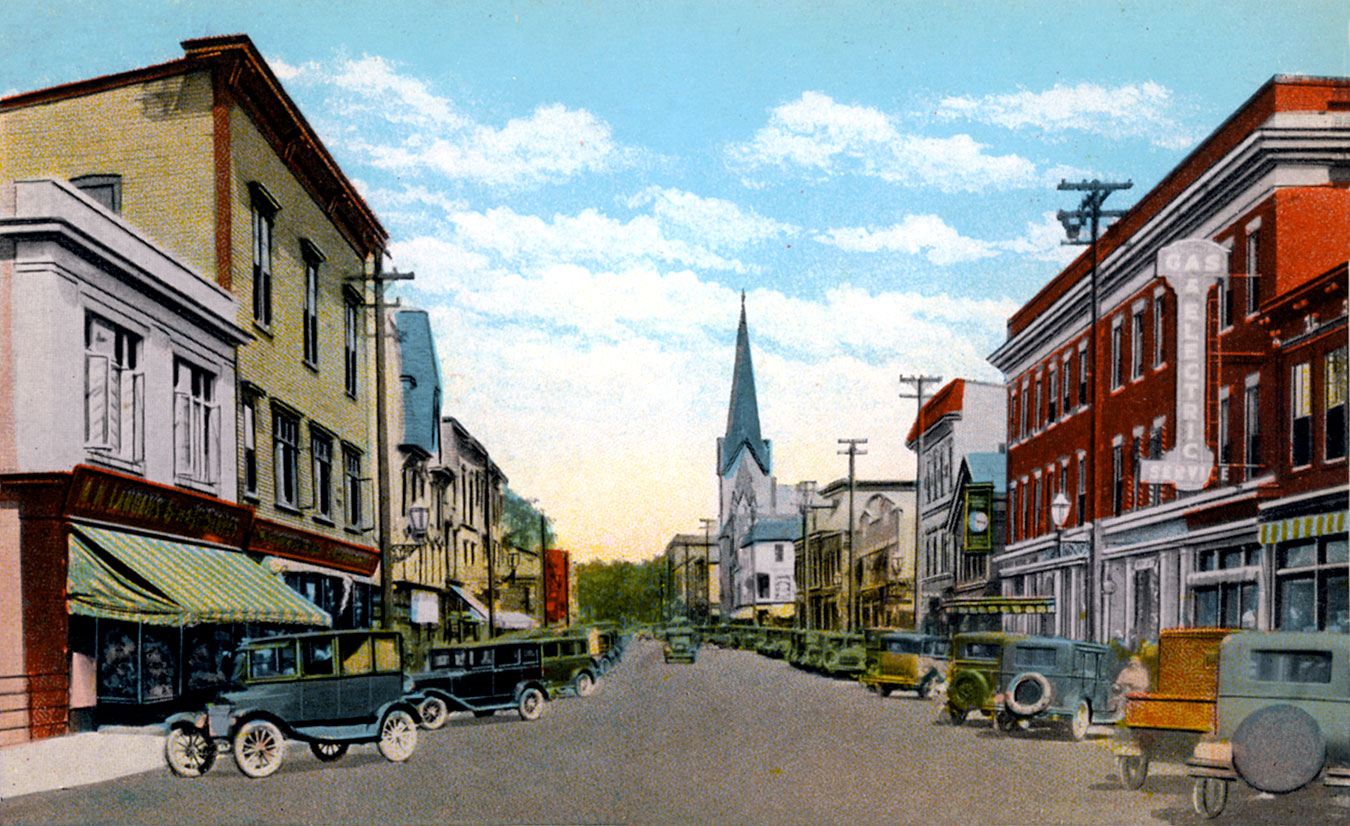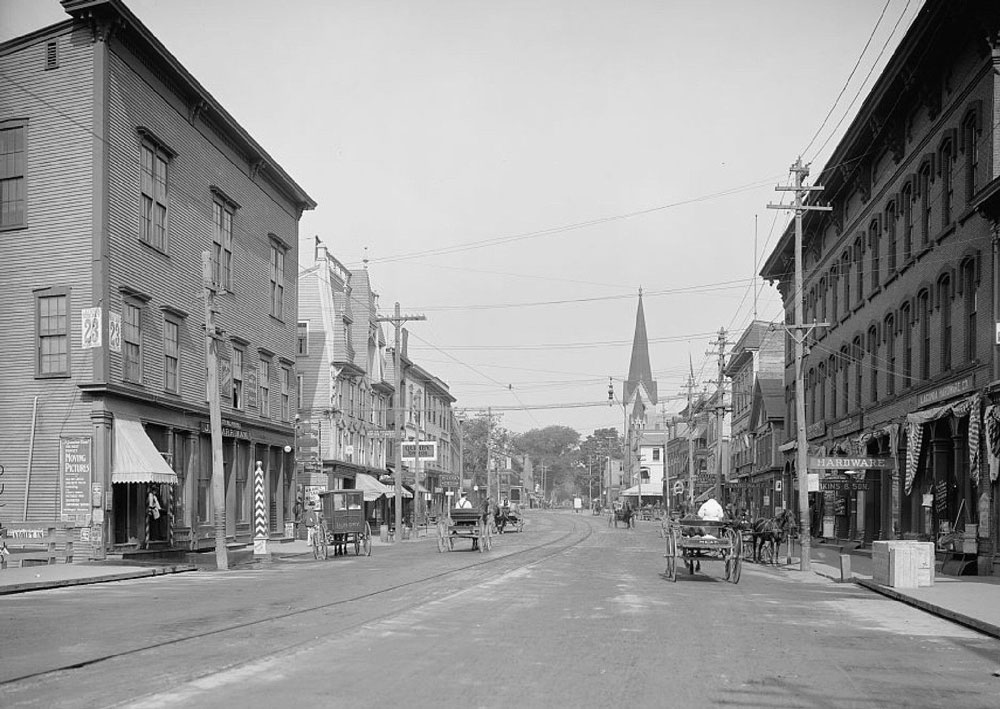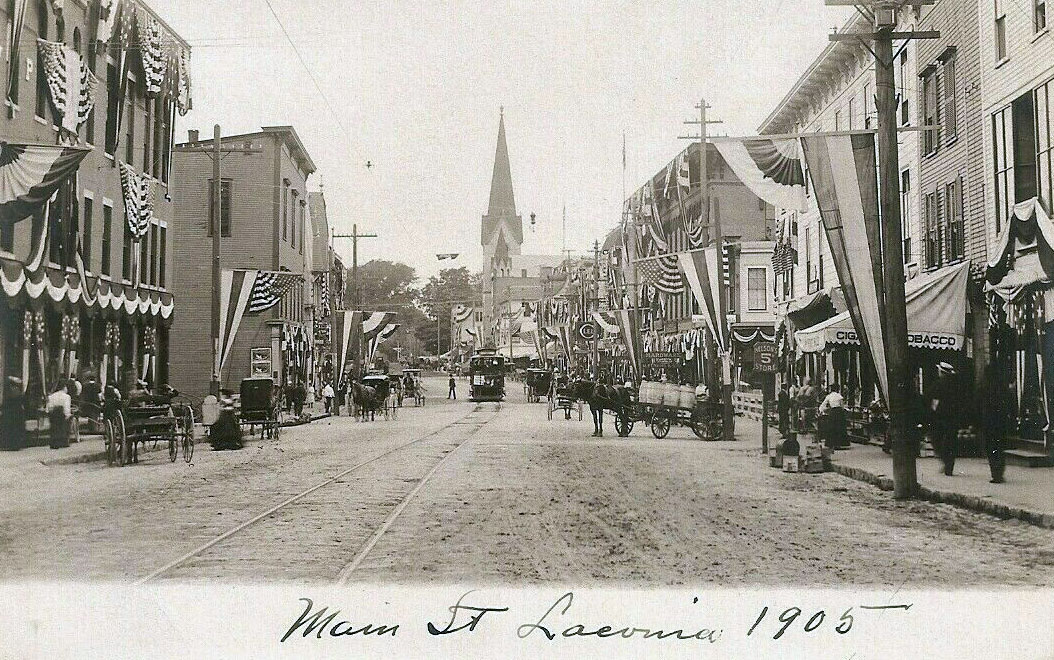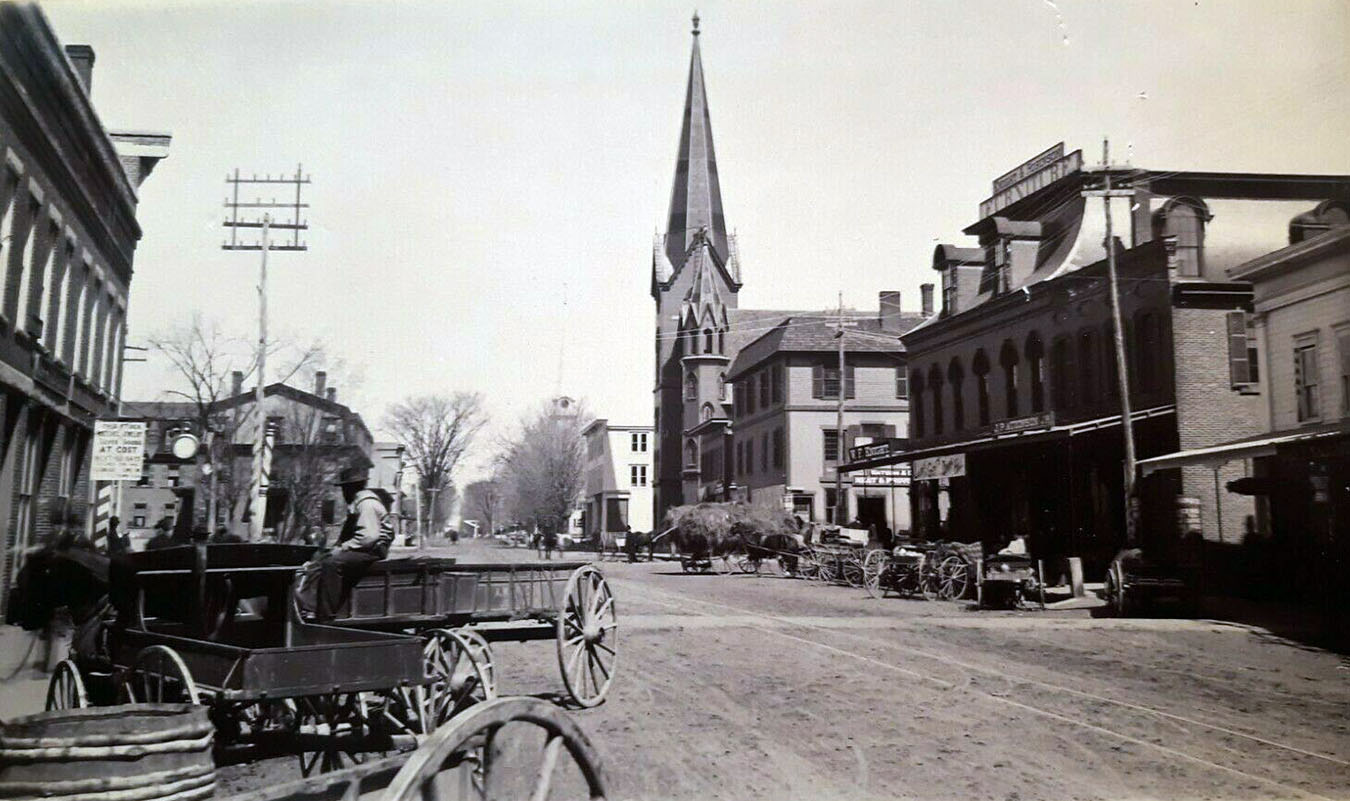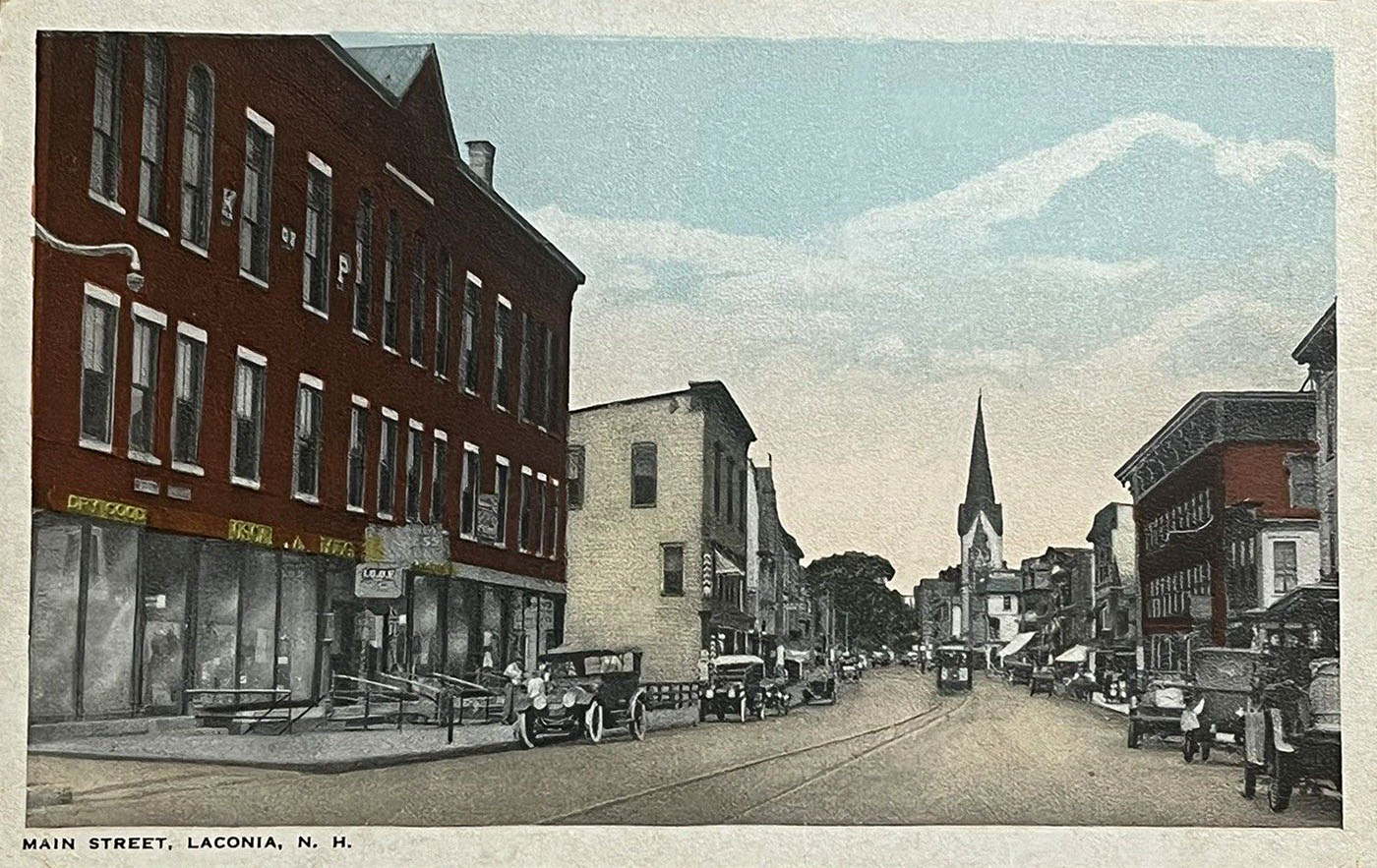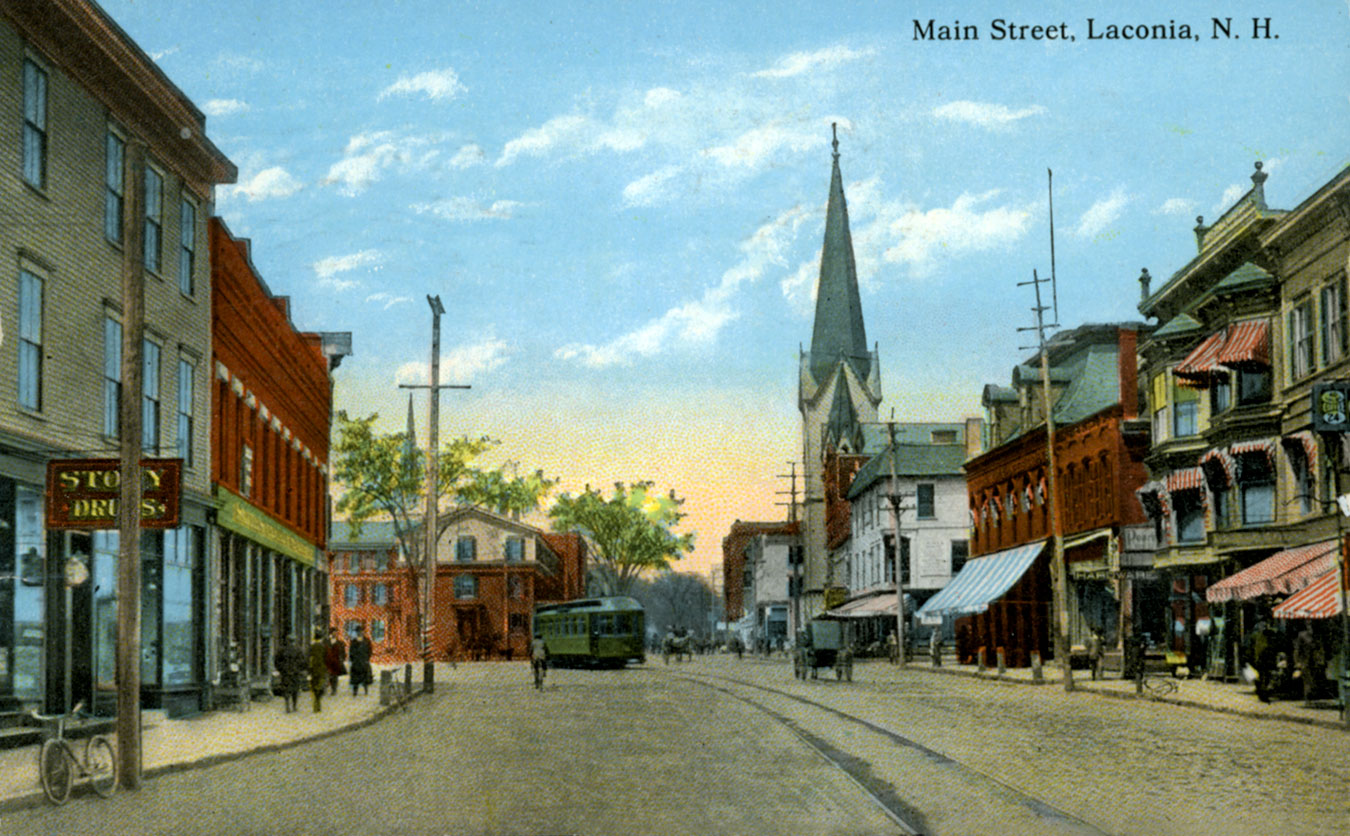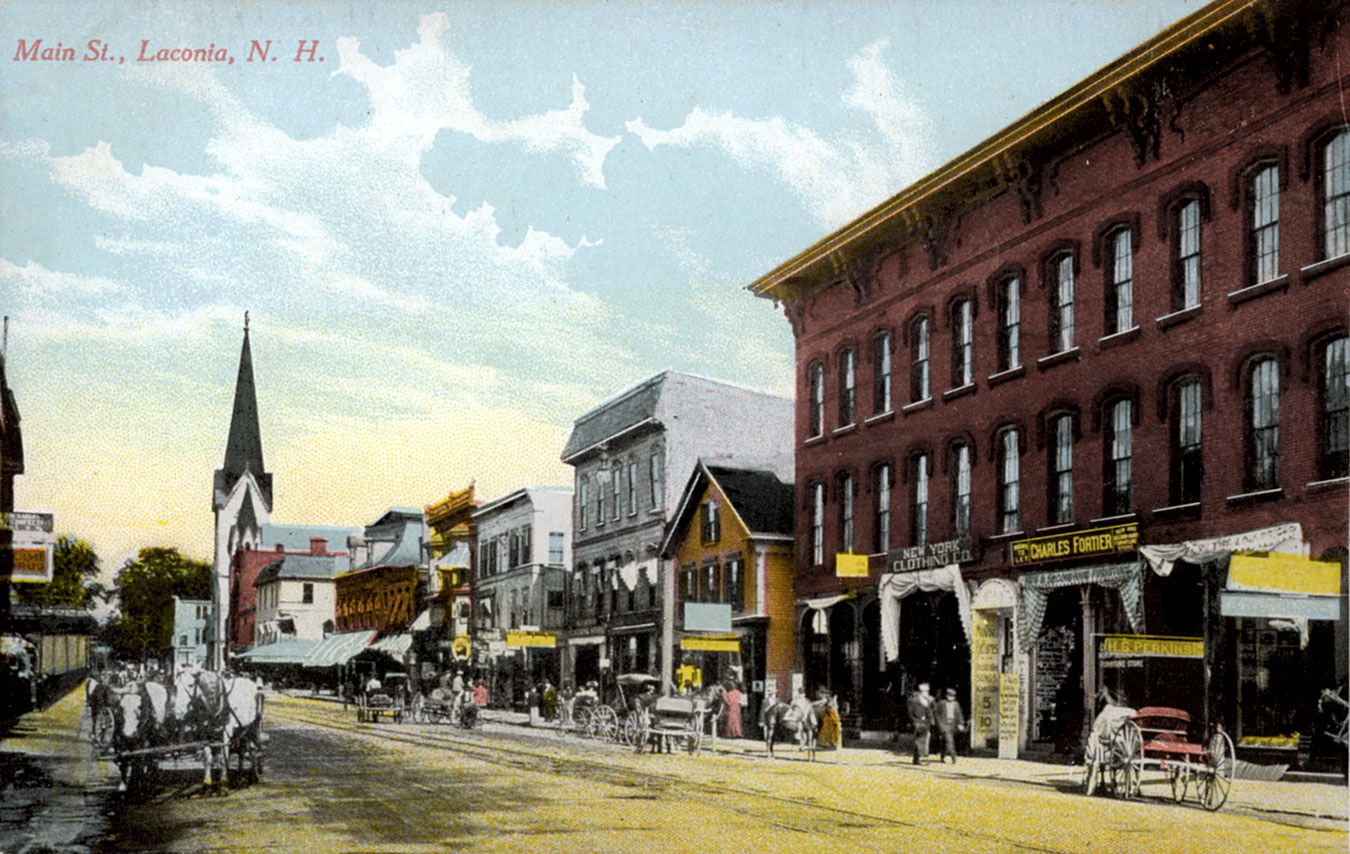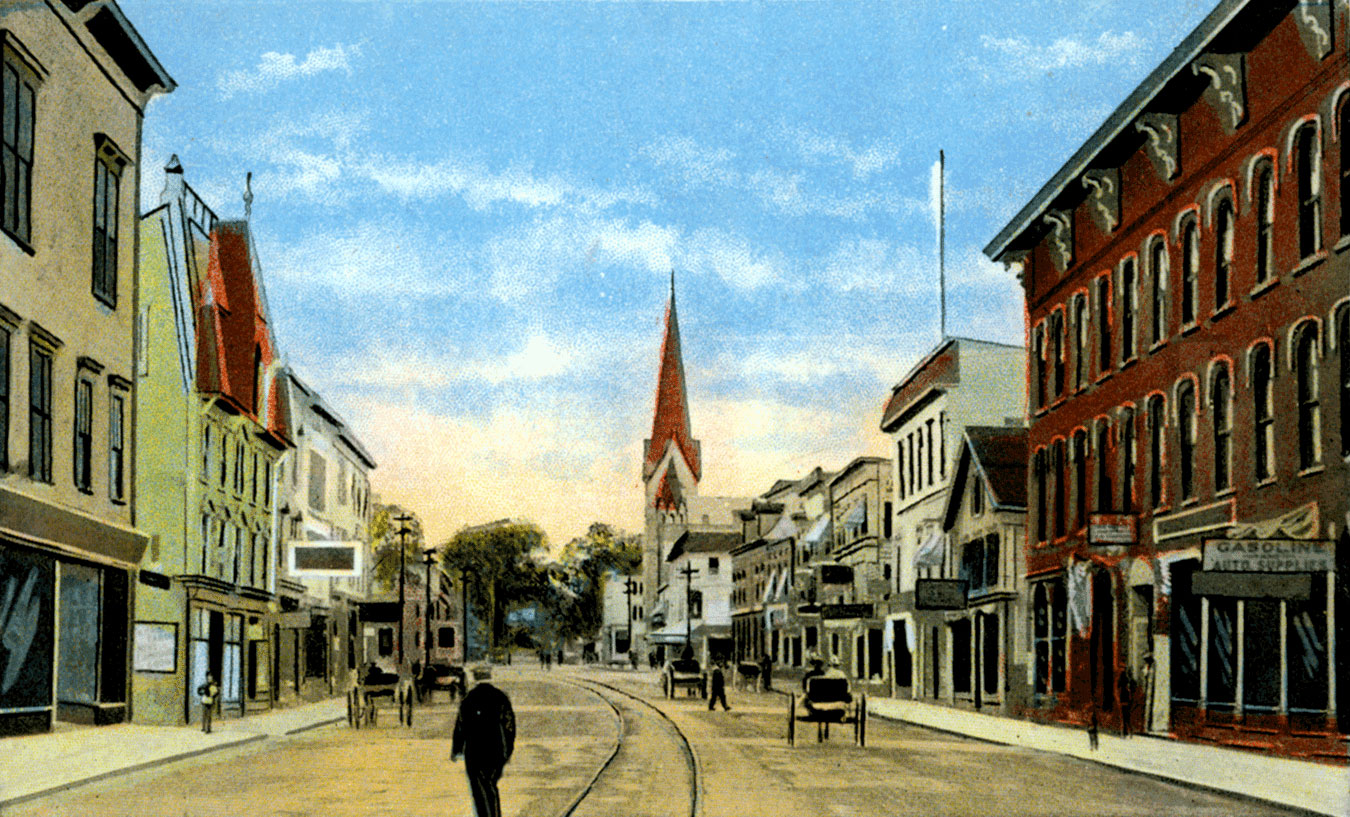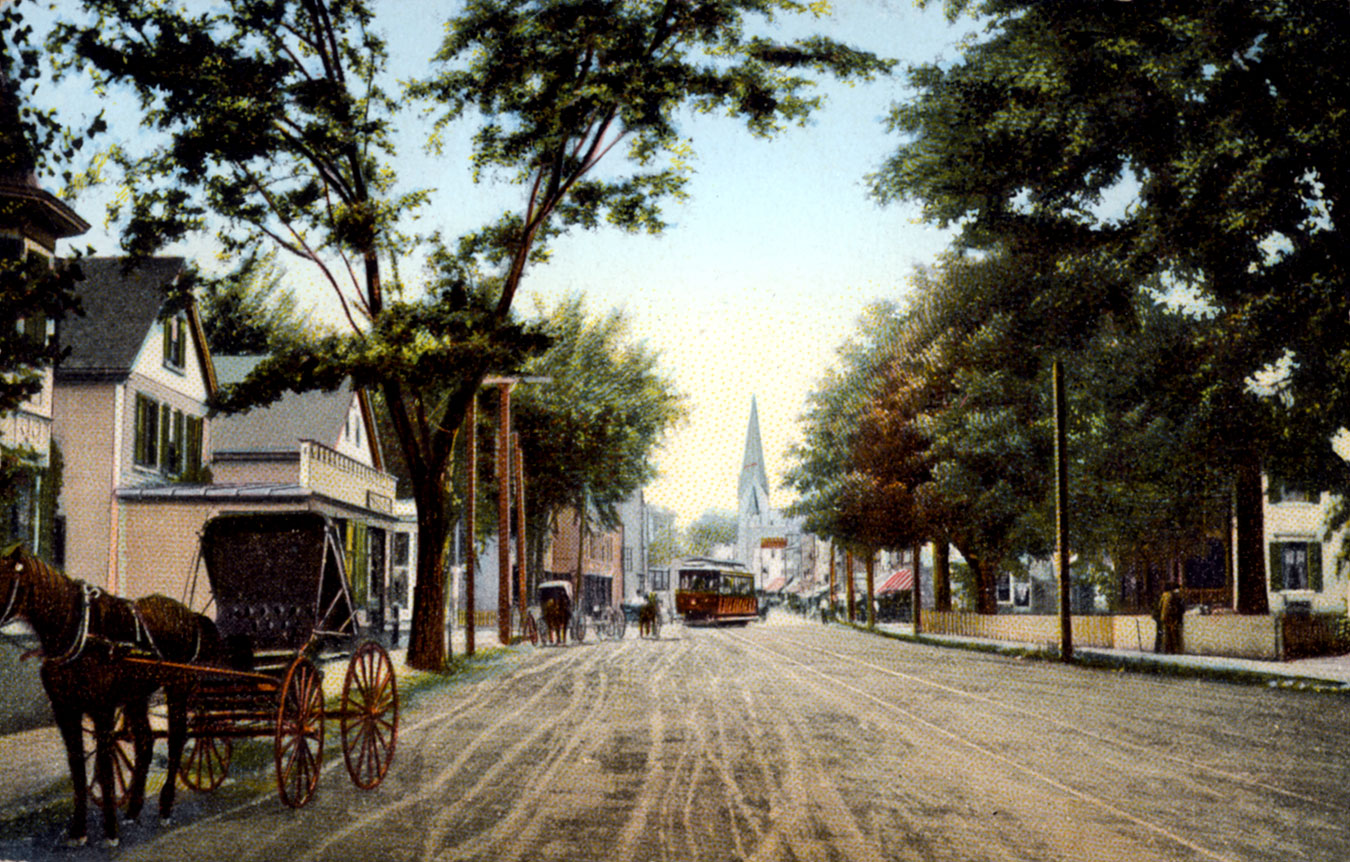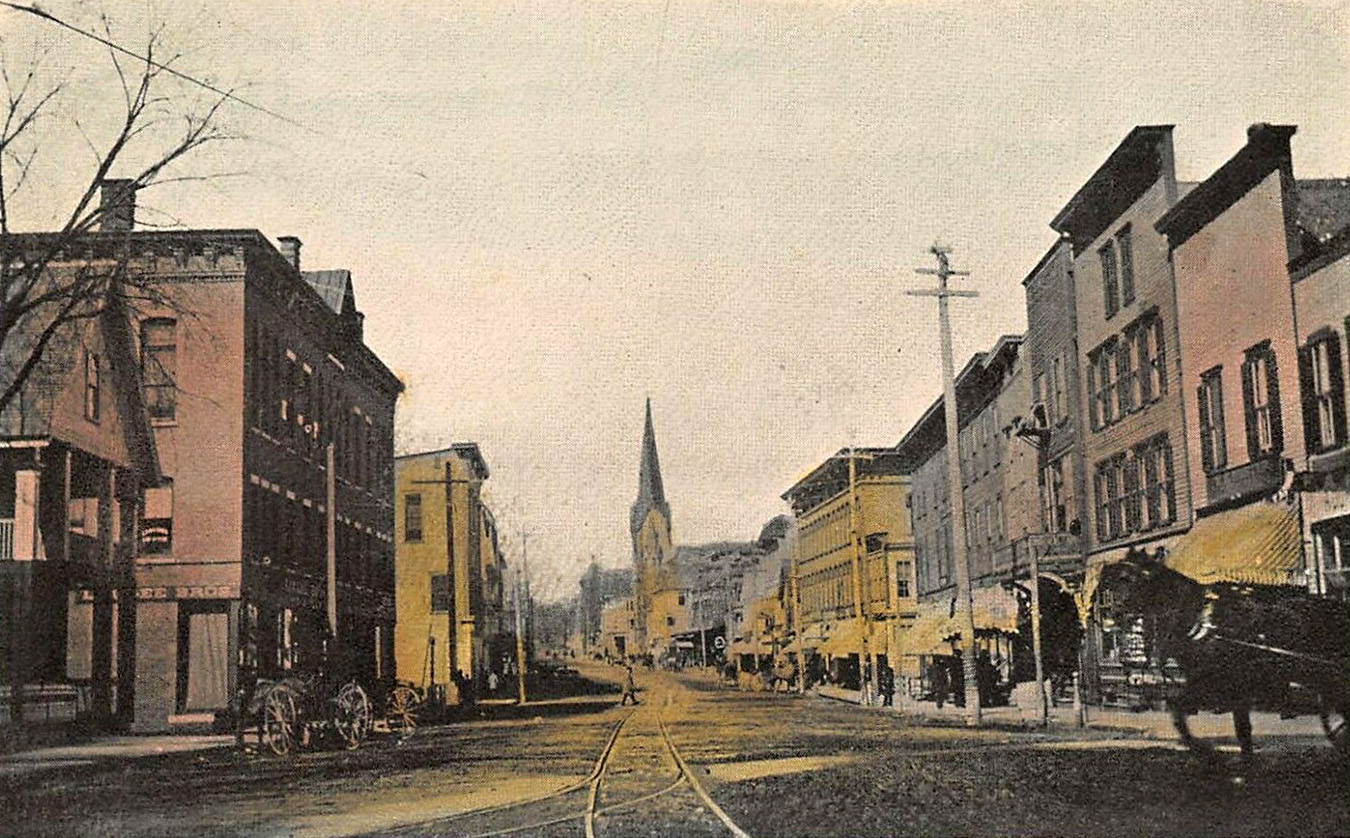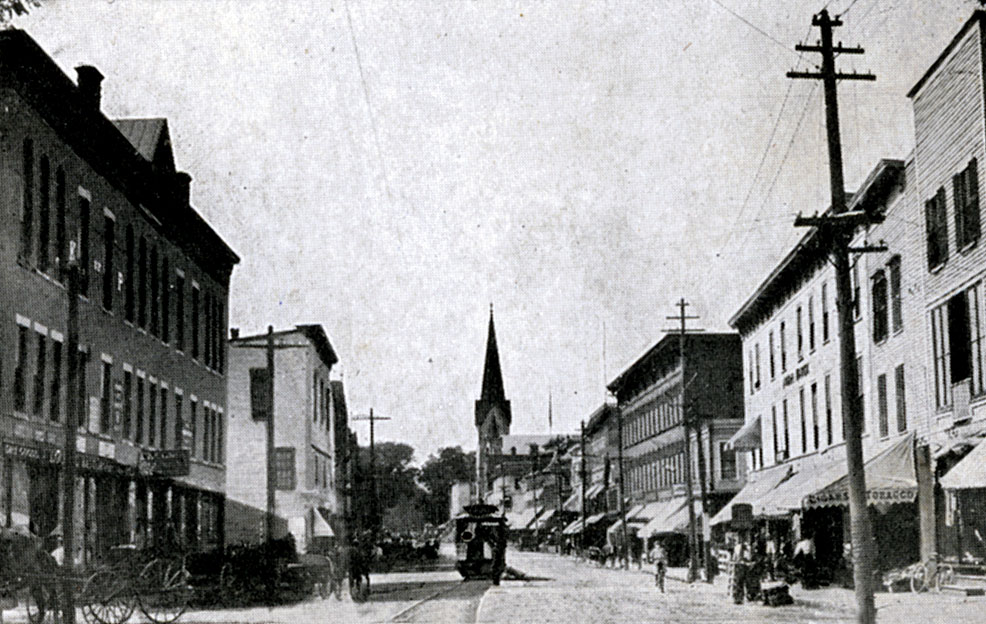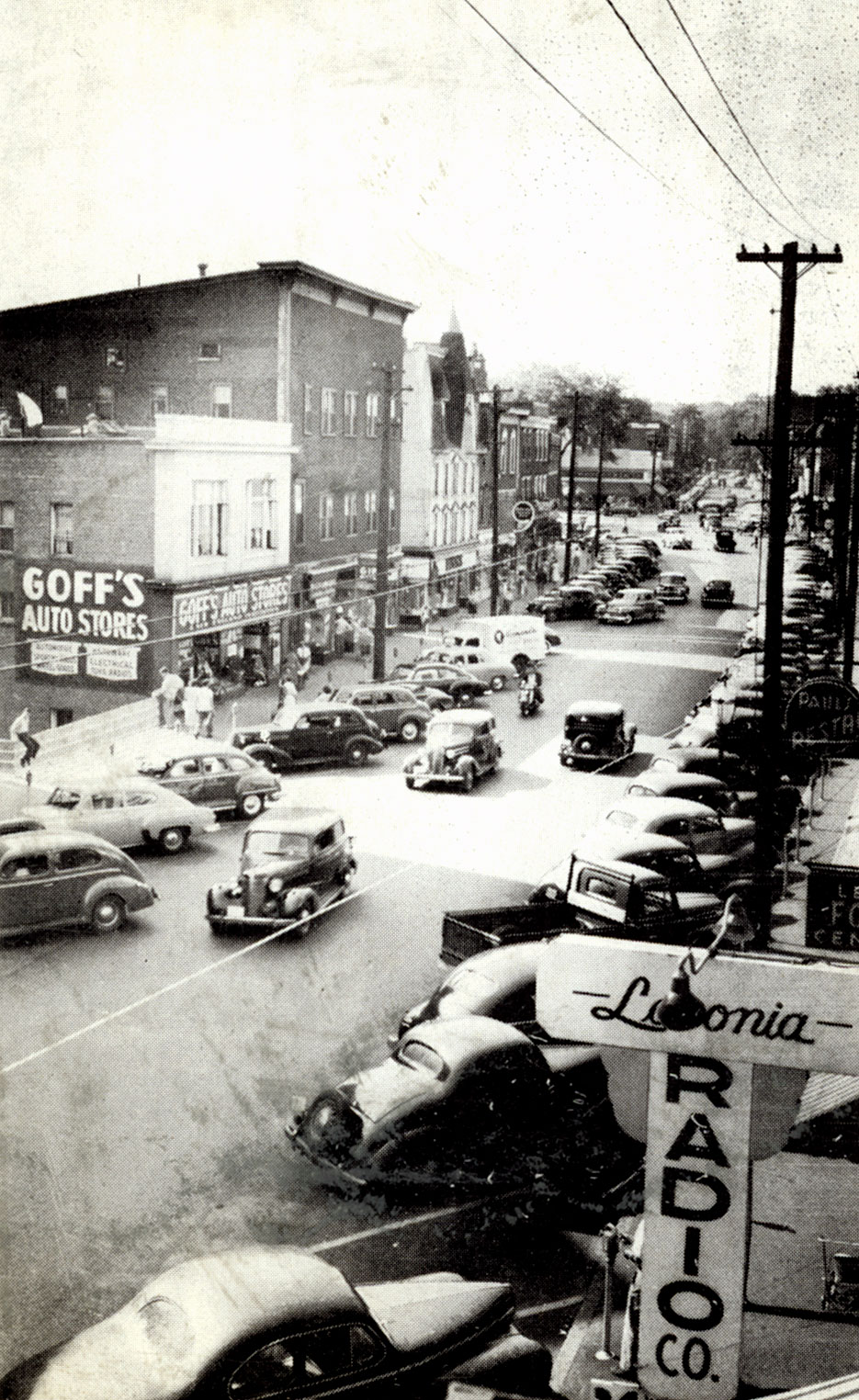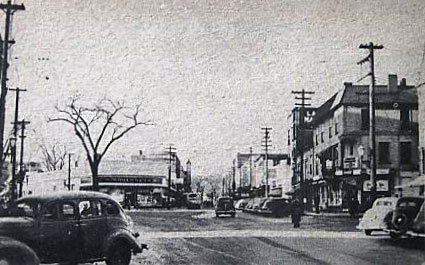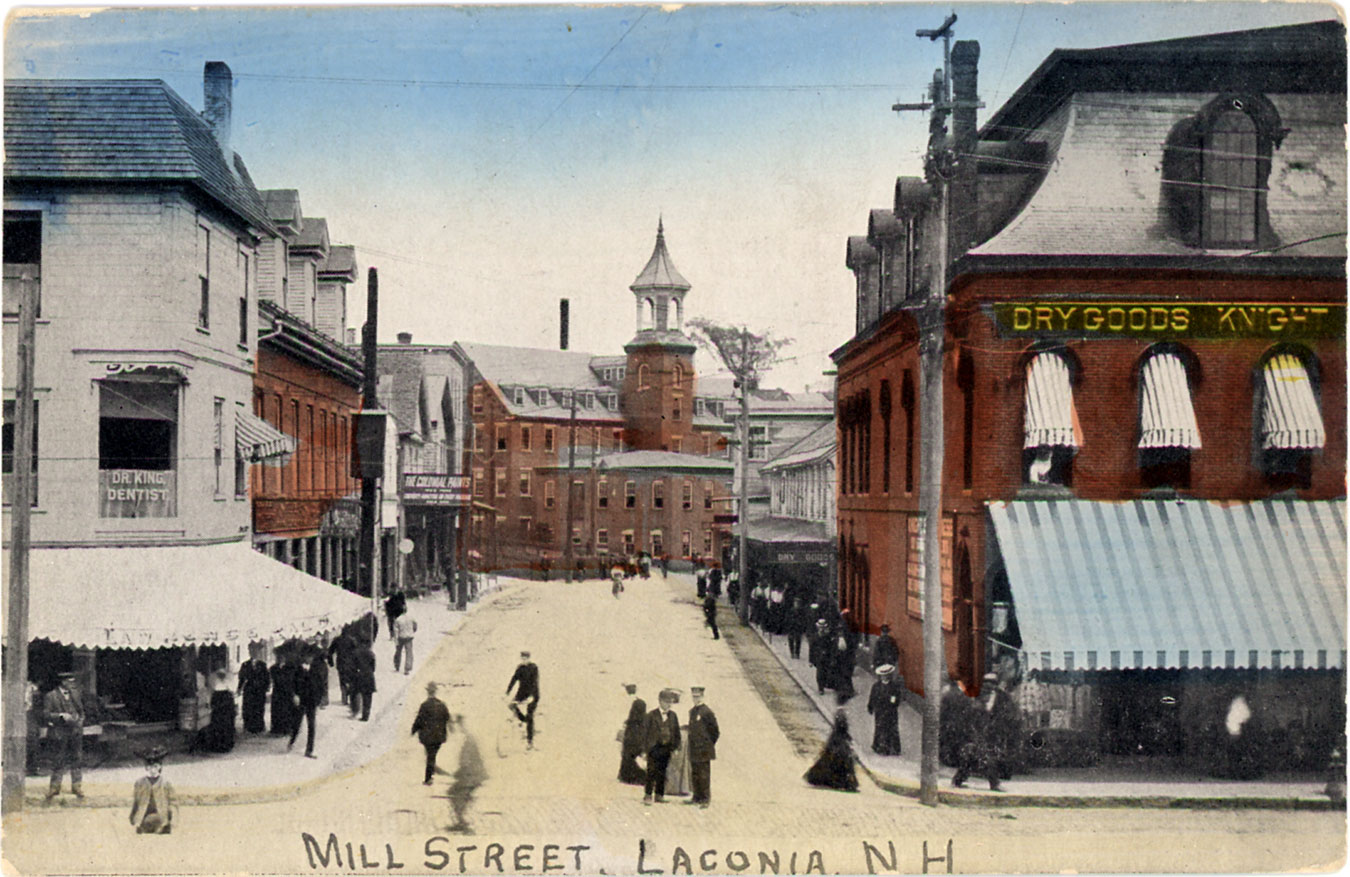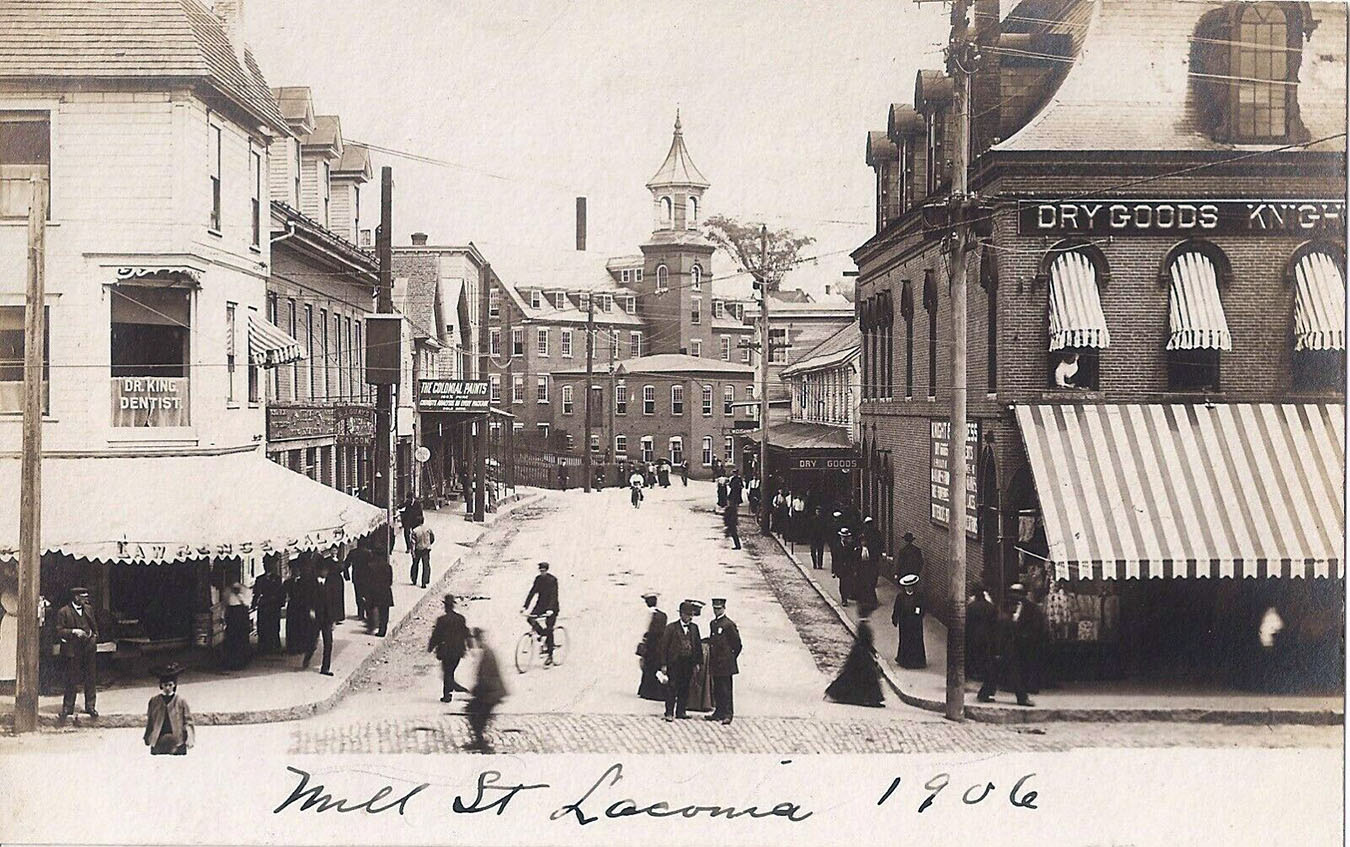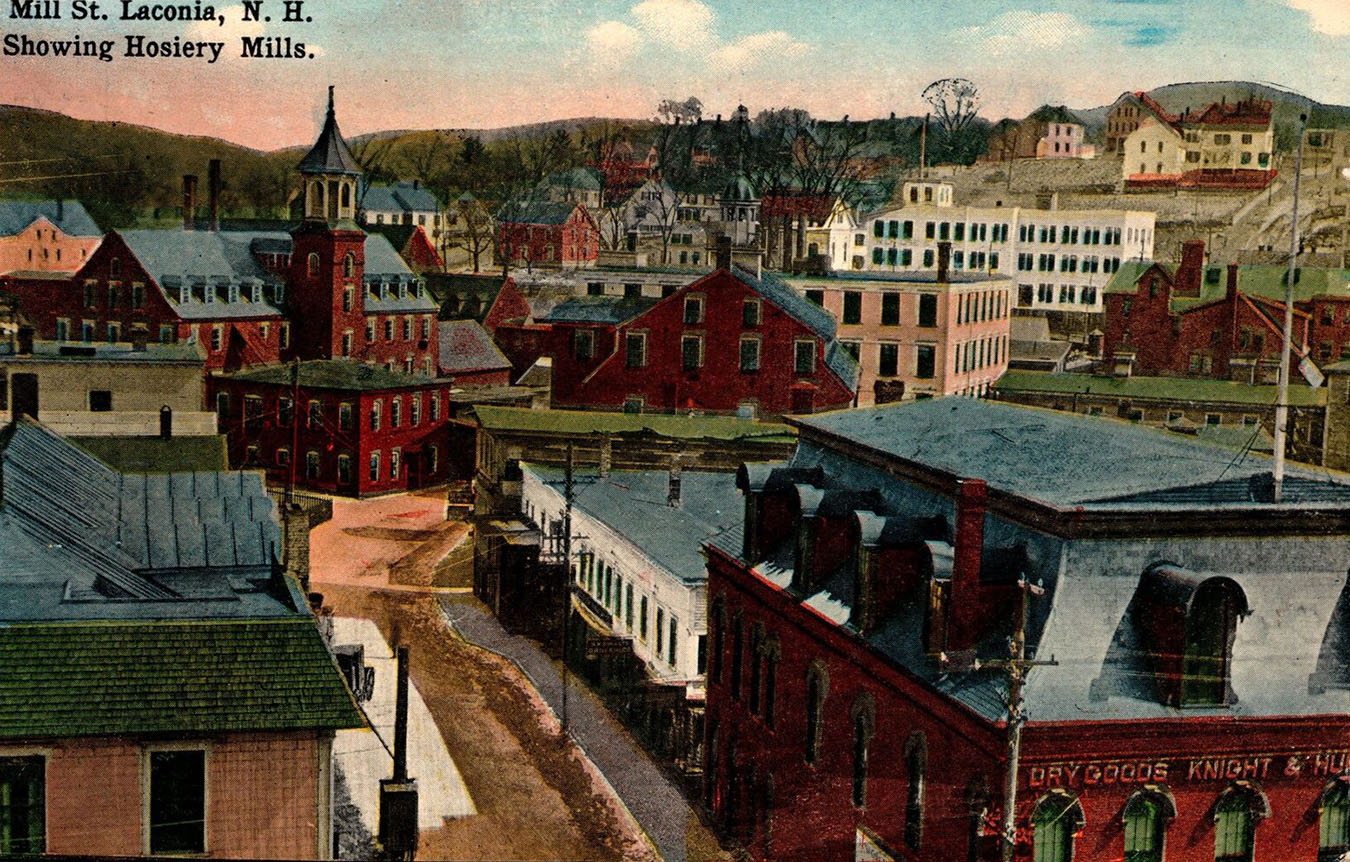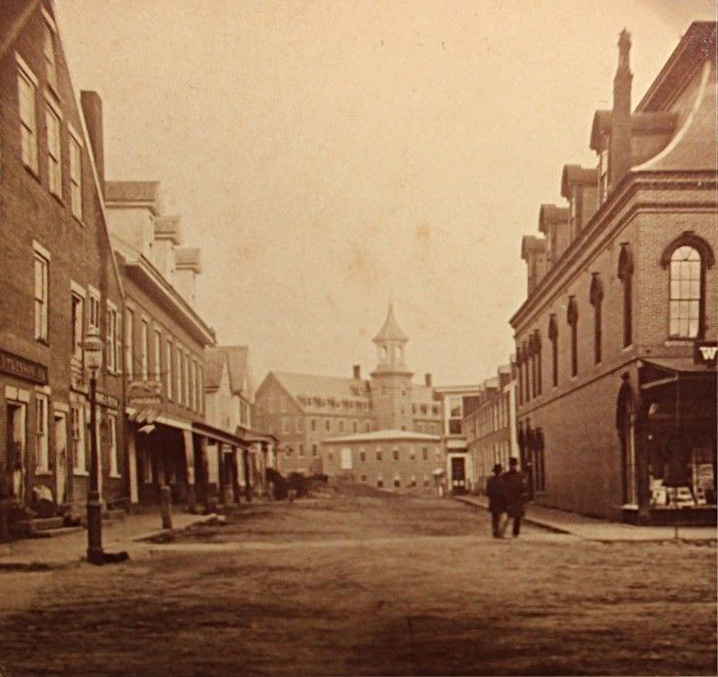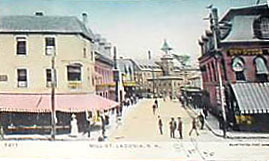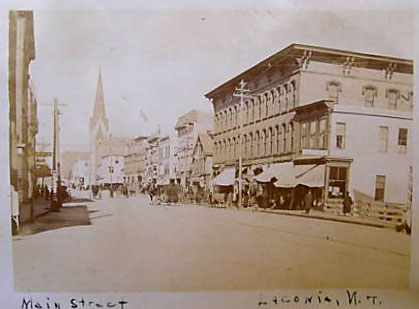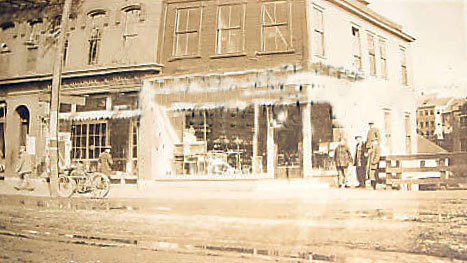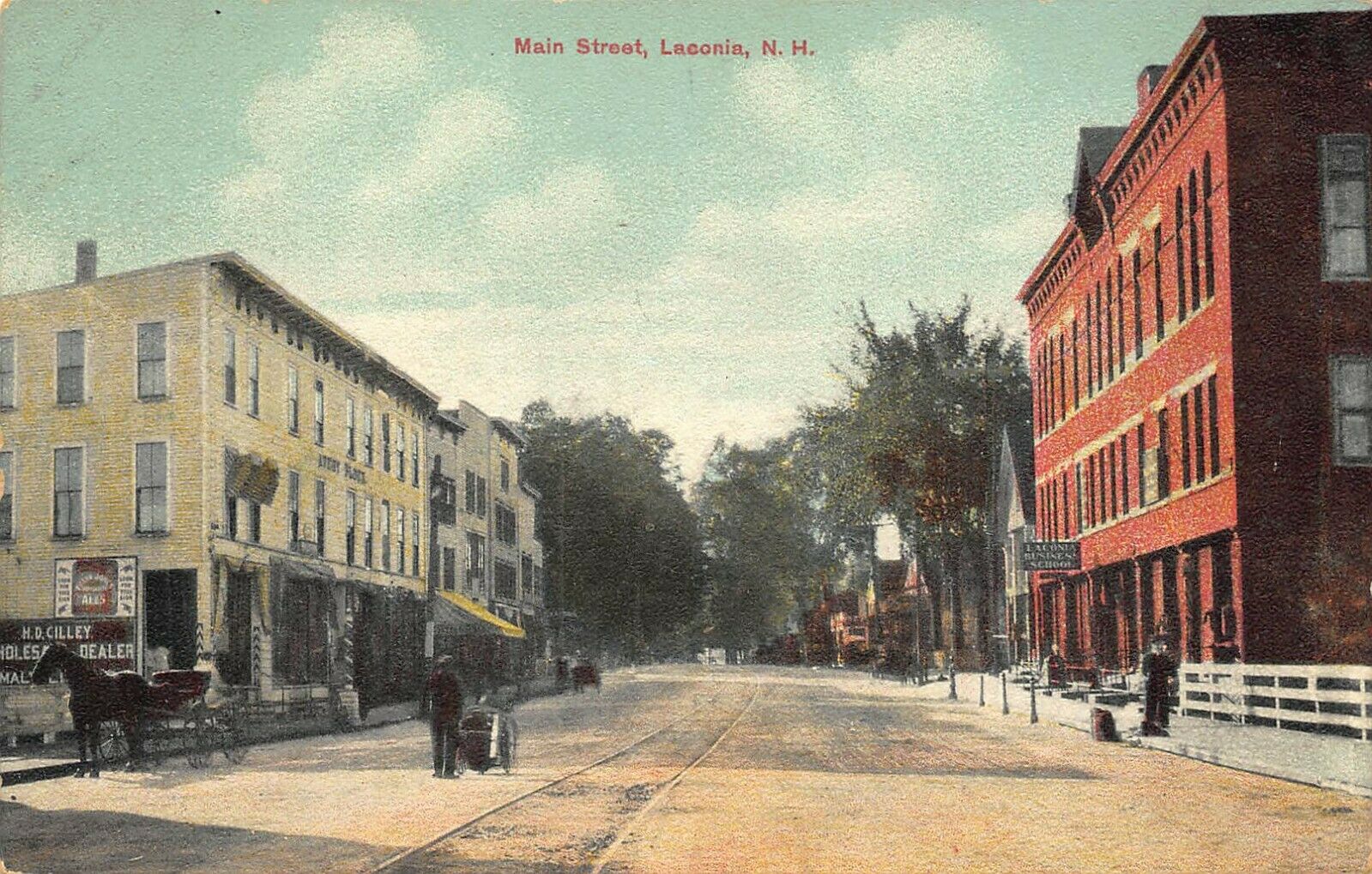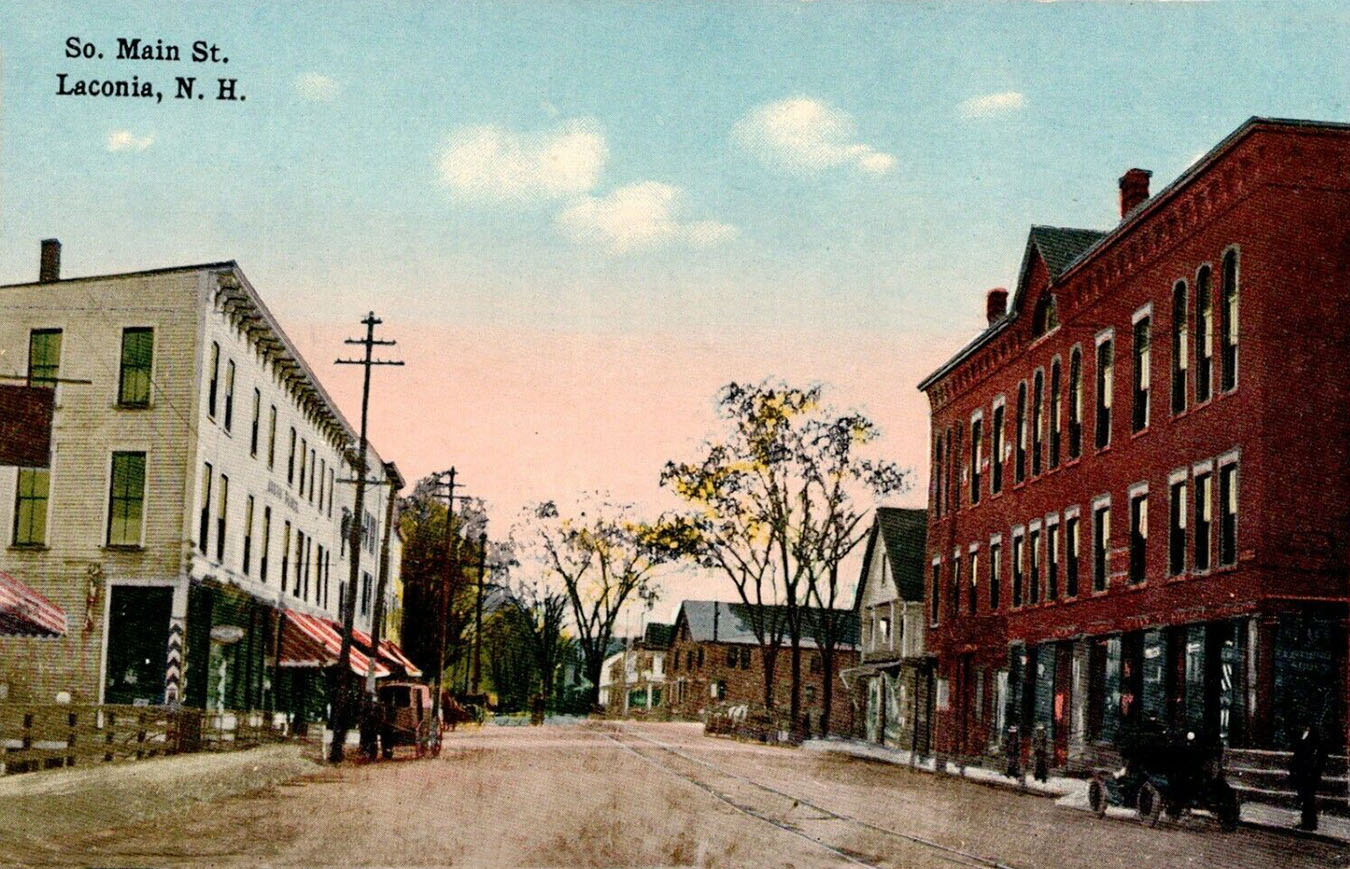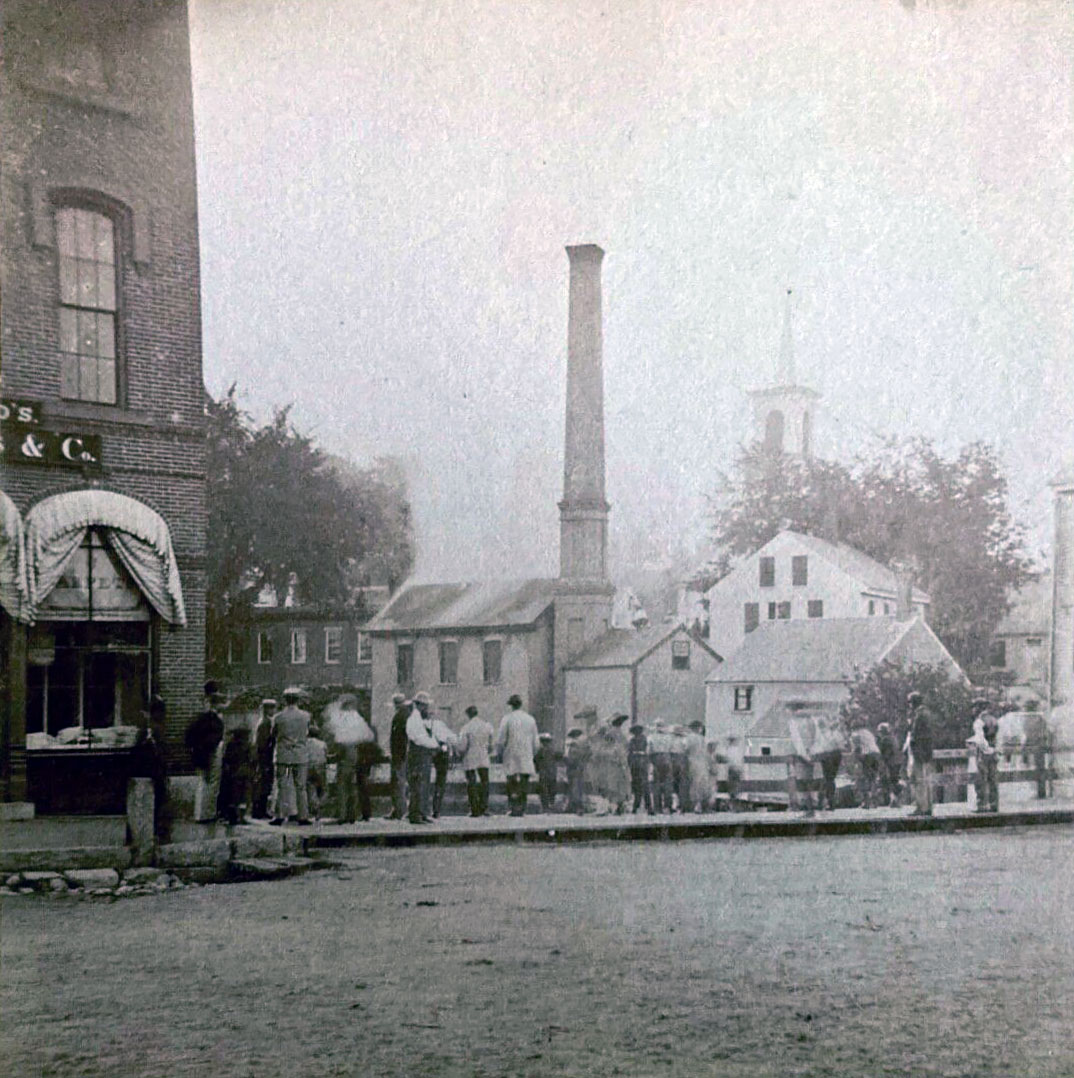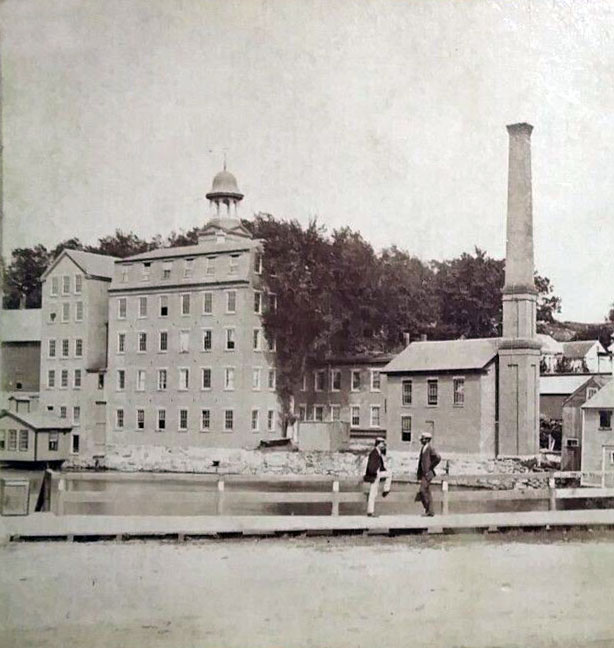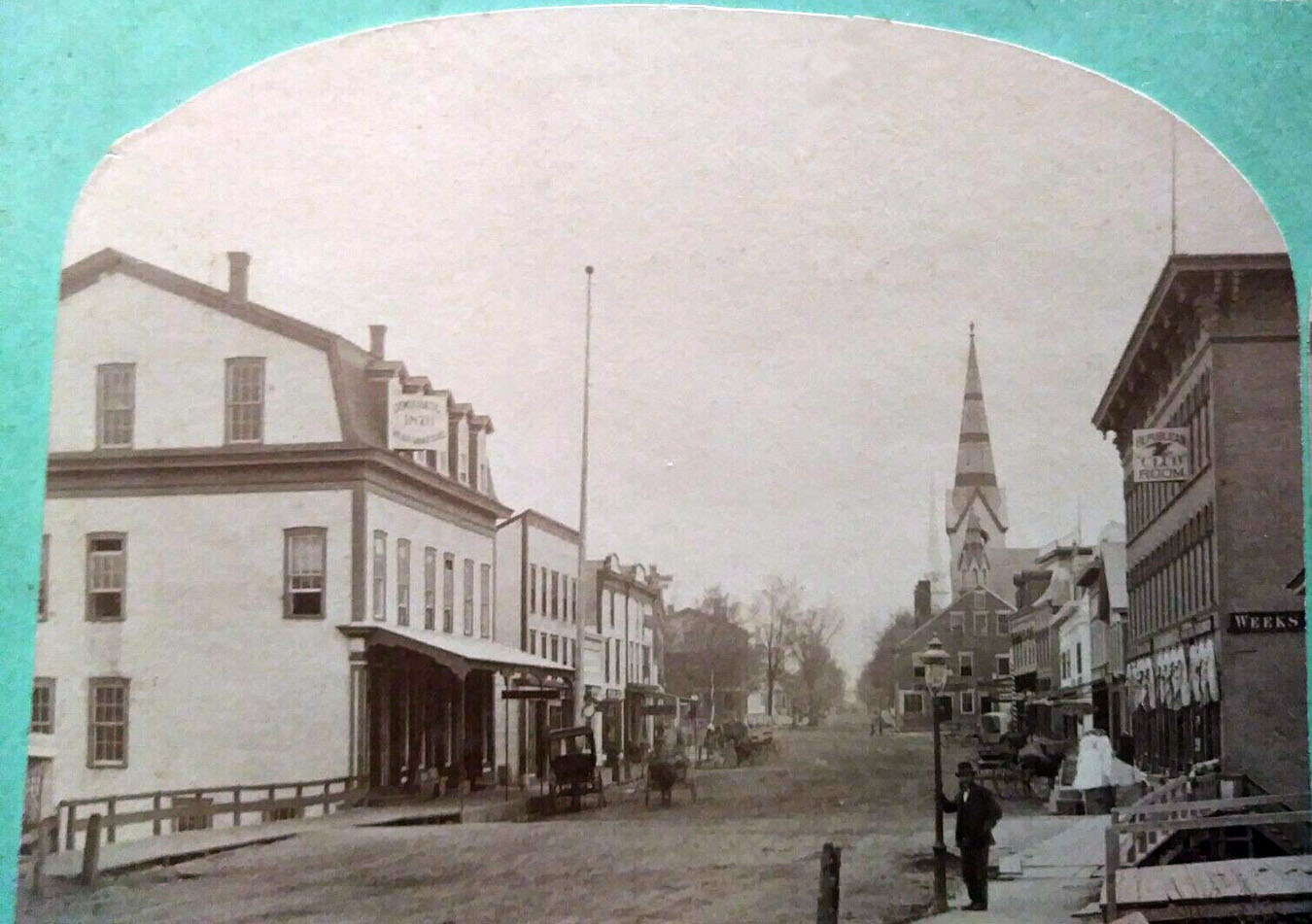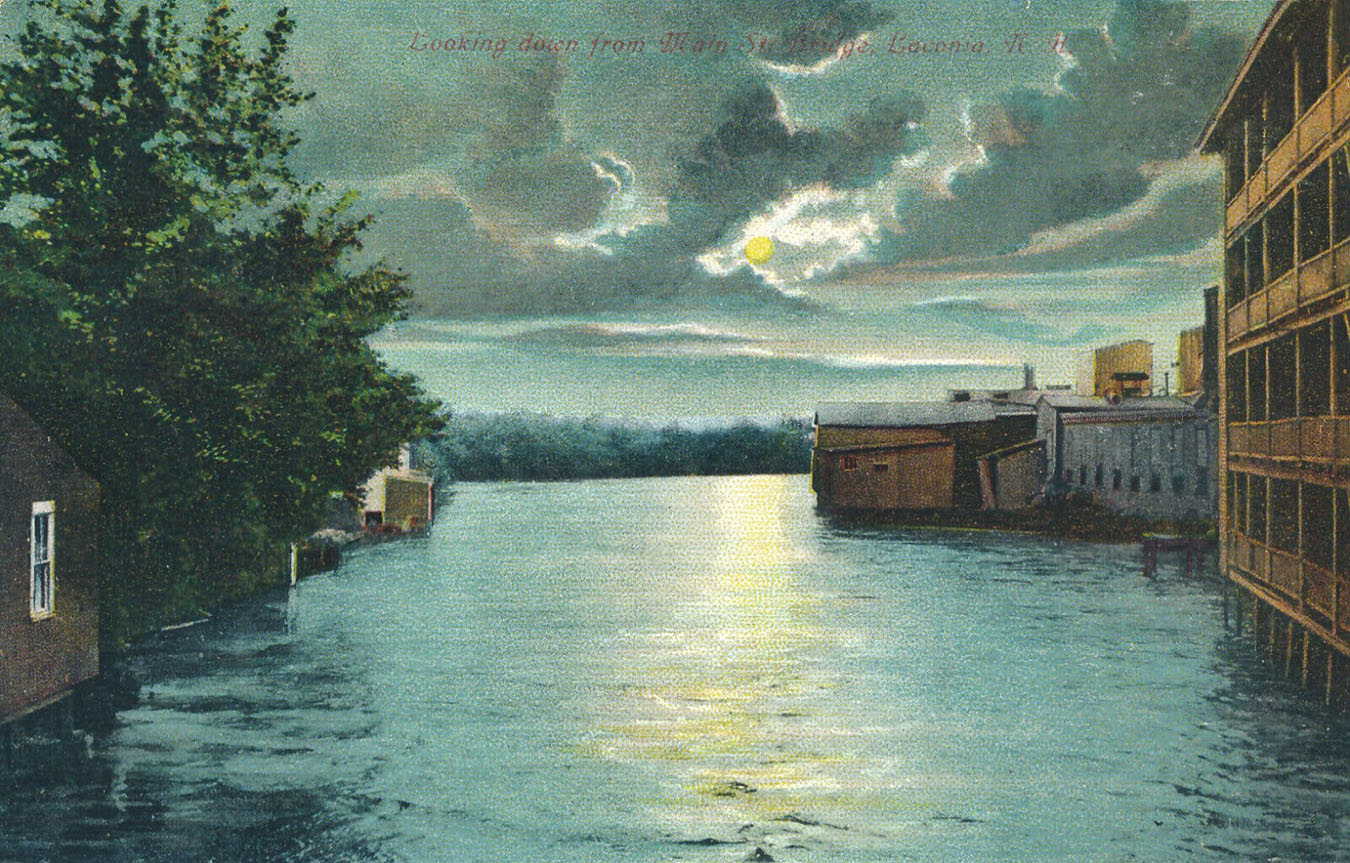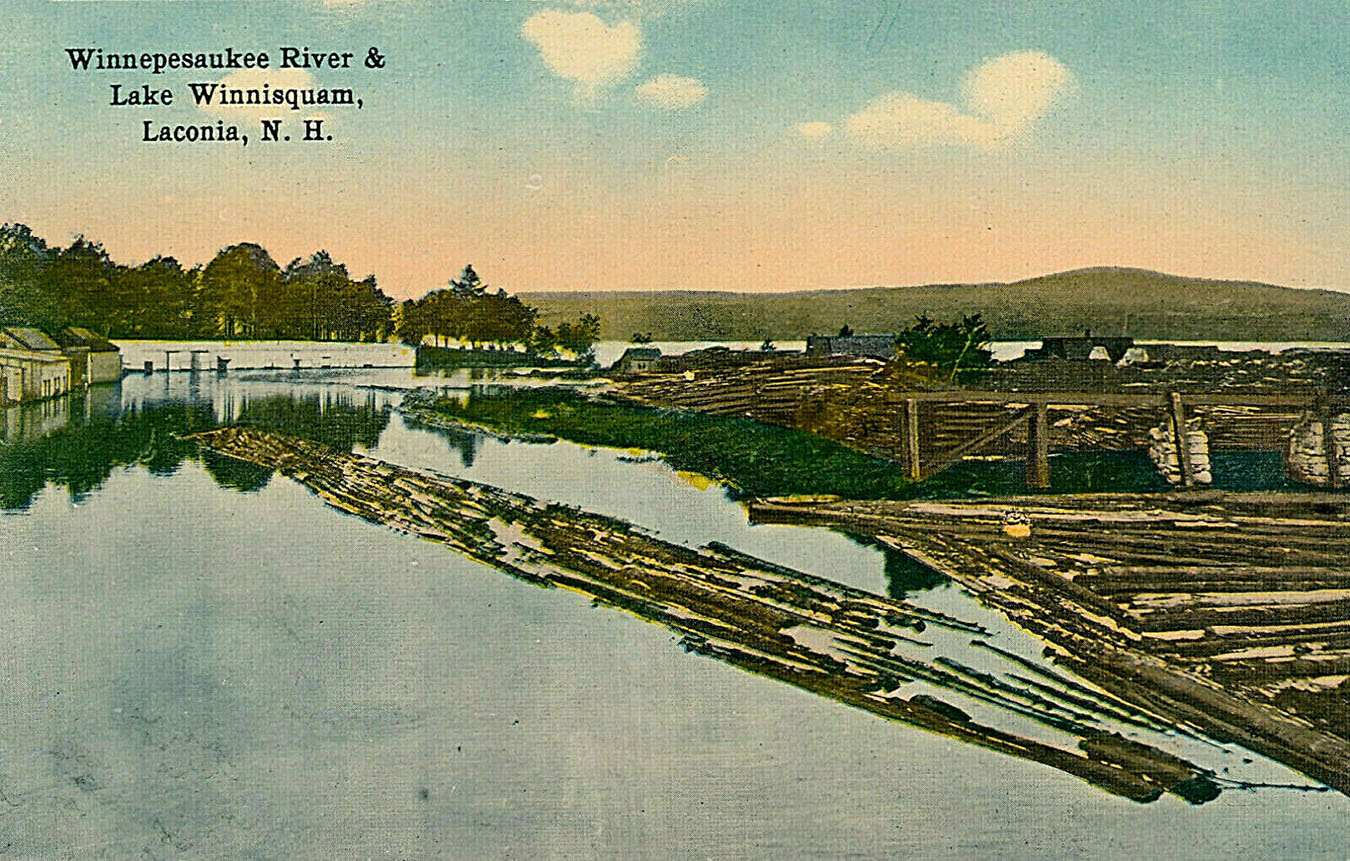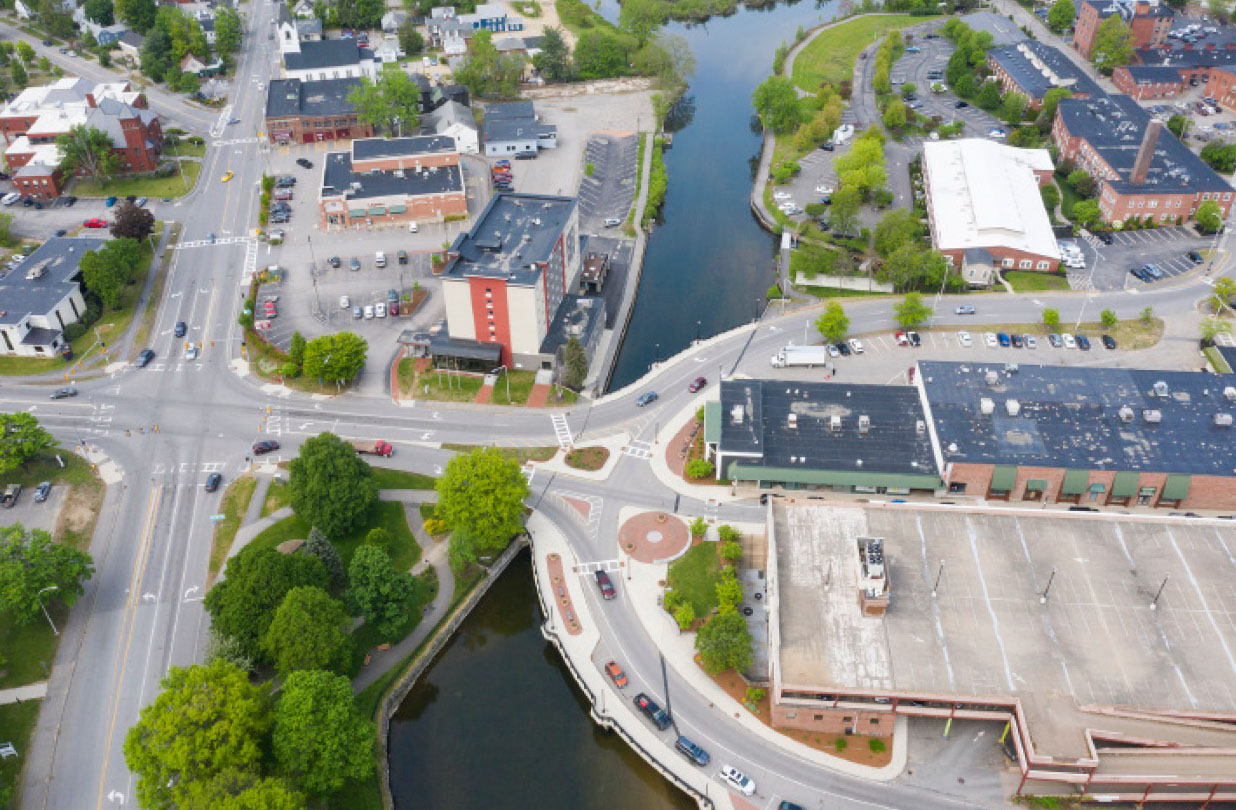Downtown Laconia
WOOLWORTH’S
In this late 1950’s photo we can note a few changes: the older Victorian style light fixtures have been replaced by modern street lights, and a traffic island has been installed.
BANK SQUARE
The Eagle Hotel occupies the center. In 1937, the structure was replaced by Woolworth’s.
On the right we see the imposing steeple of the Unitarian Church. The following are all images of Bank Square. The last two images, taken from a roof top, are in b&w and colorized postcard versions.
MOULTON’S OPERA HOUSE
Moulton’s Opera House. “Built in 1886, this massive brick structure, containing an opera house on its second and third floors, loomed over Bank Square at its corner with Water Street until it was demolished during Urban Renewal in 1970.” Quote from Warren D. Huse’s book, Laconia, Acadia publishing.
Moulton’s Opera House is partially shown on the far right of the postcards below. These postcards are the few postcards on this webpage looking in a southward direction, away from Bank Square.
LACONIA UNITARIAN CHURCH
The Laconia Unitarian Church opened on November 11, 1868. From circa 1890, until 1903, the Church hosted the Laconia Public Library in its basement. The Church burned down in late 1938. The cause was arson. On February 28, 1939, the ruins were carefully brought down, so as not to damage the nearby Laconia National Bank building.
The Masonic Temple
The Masonic Temple building still exists. It is located near the corner of Main Street and Church Street. The empty lot seen to the left of the building in these postcards was filled in by a wing of the Laconia Tavern building, built in 1913.
Looking South from Depot Square (later known as Veterans Square). The new Masonic Temple building is seen on the left. The original building (not shown) was destroyed by explosion and fire on December 6, 1902. The new building was built in 1903.
THE EAGLE HOTEL
From the Illustrated Laconian, published in 1899: “The Eagle Hotel, located at the juction of Main and Pleasant streets, on Bank square, is Laconia’s most popular hotel for commerical travelers and others who desire strictly first-class accommodations. The Eagle Hotel…accommodates 100 guests. The table is superb, the rooms and beds are clean and comfortable, the house is illuminated with electricity, supplied with a pool room and a barber shop, while the location, directly in the business centre of the city, makes the Eagle a very convenient and desirable home for the “stranger within our gates”. The hotel lasted until 1937, when it was replaced by Woolworth’s.
VIEWS OF MAIN STREET LOOKING NORTH
Contrast and compare the early 1920s view with the late 1920s view. They are very similar, except in the later view, the trolley tracks are gone ( the last year of operations for the Laconia Street Railway was in 1925.)
The first black & white view is from a Library of Congress photo. With no cars, just horse and carriages, the black & white views date between 1900-1910.
MILL STREET
The following view is of Mill Street (center), looking towards the J.W. Busiel mill. The Unitarian Church can be seen on the left, while Main Street can be seen on the right. At the corner of Mill St and Main St, the store with the six window awnings and sidewalk canopy was the Knight & Huntress Dry Goods and Garments store. (Although the store name sounds quasi-medieval, Knight and Huntress were the last names of the store owners.)
Mill Street no longer exists. It was another victim of Urban Renewal. The photo was taken from the rooftop of Moulton’s Opera House, and was the left half of a panoramic view, which can be seen in its entirety here.
Here are several additional postcard views of Mill Street, and an old stereo view:
THE MAIN STREET BRIDGE
The bridge in a circa 1870s stereoview by W.L. Wilder, one of Laconia’s earliest photographers. Everyone is looking down at the river, but what they are looking at is unknown.
The current, U-shaped Main Street Bridge was built in 1969, as part of the downtown Laconia Urban Renewal project. (Photo by Jon Decker/The Laconia Daily Sun)










